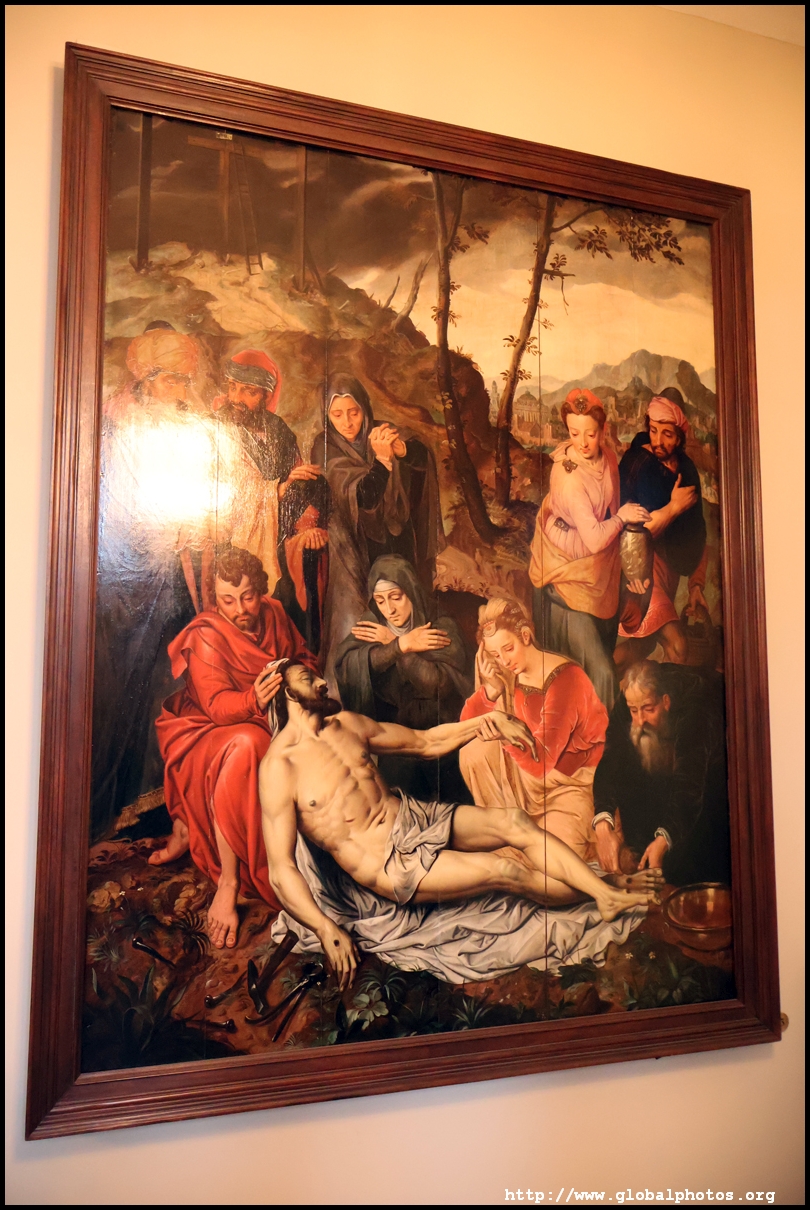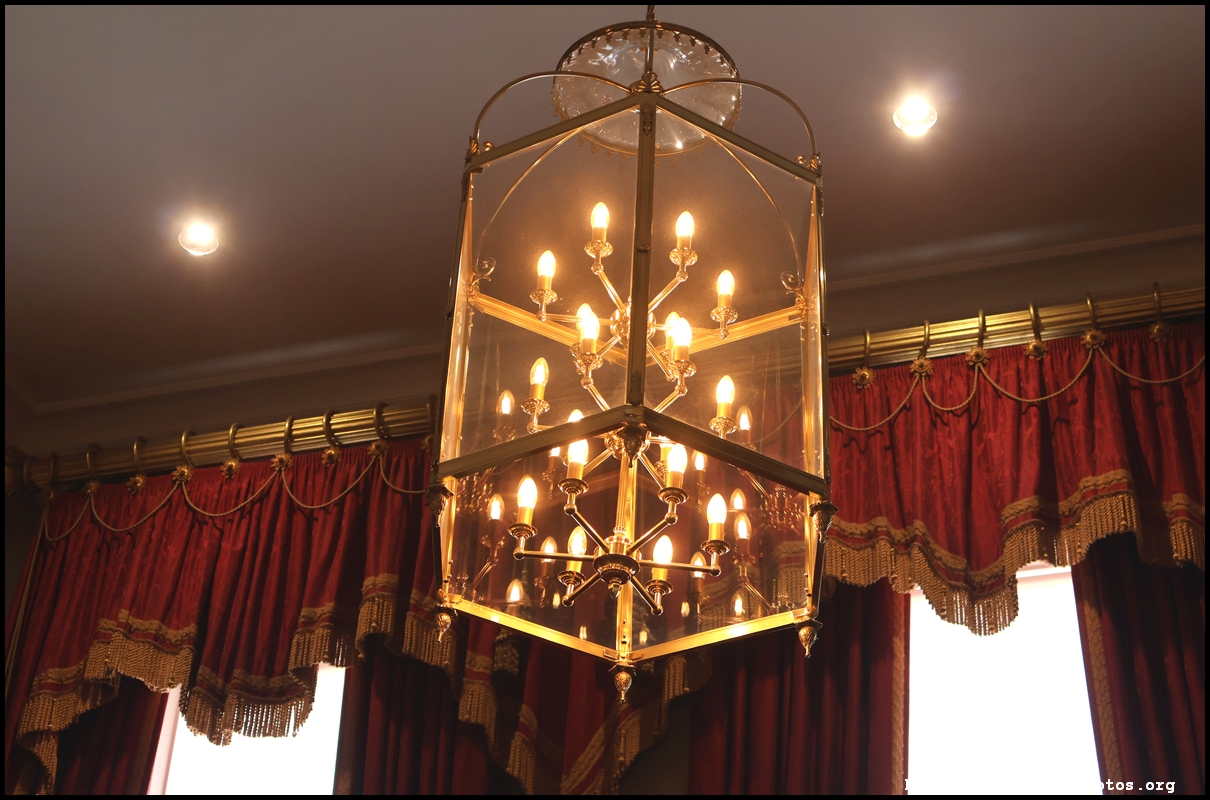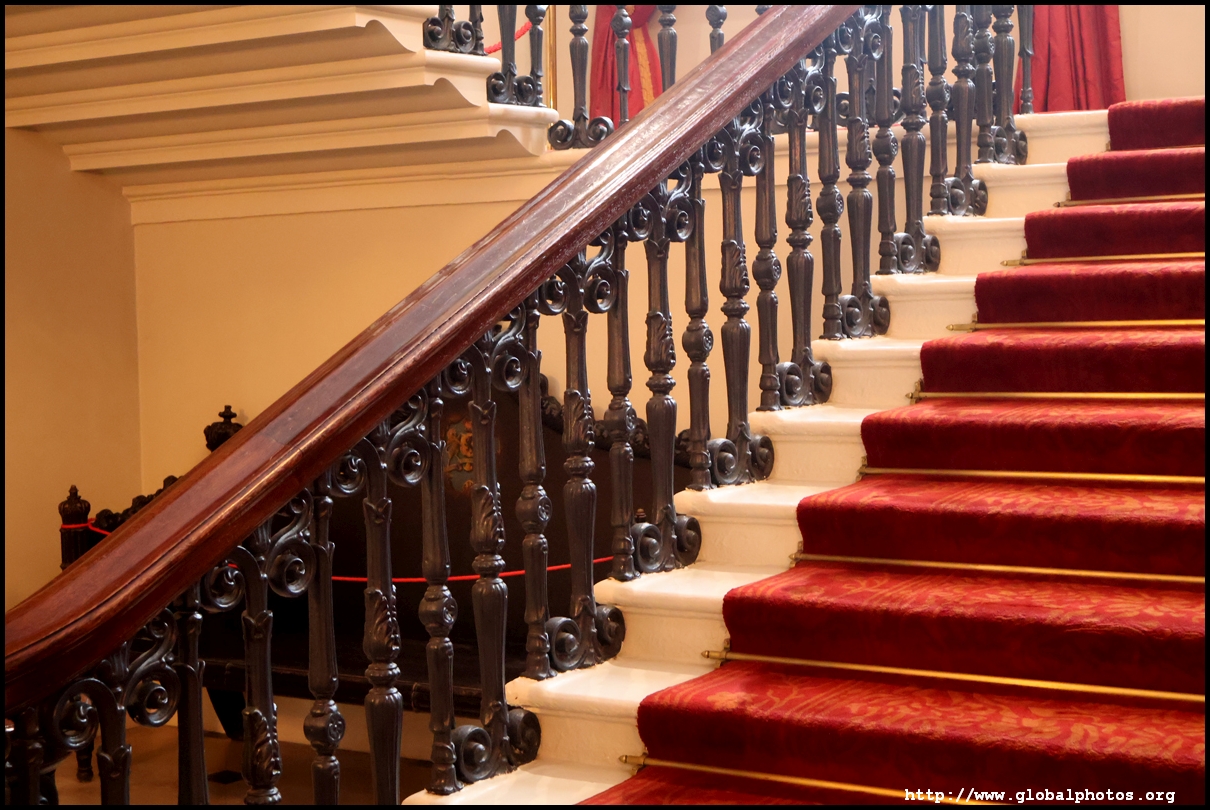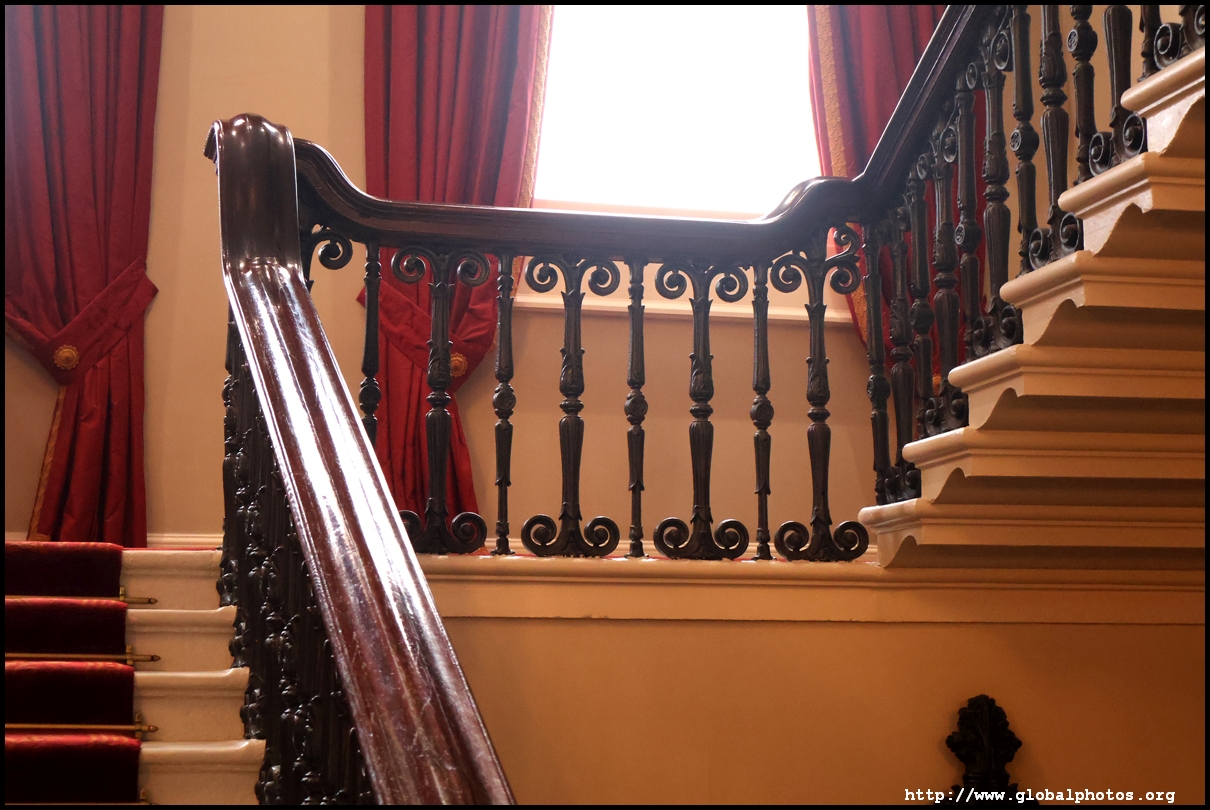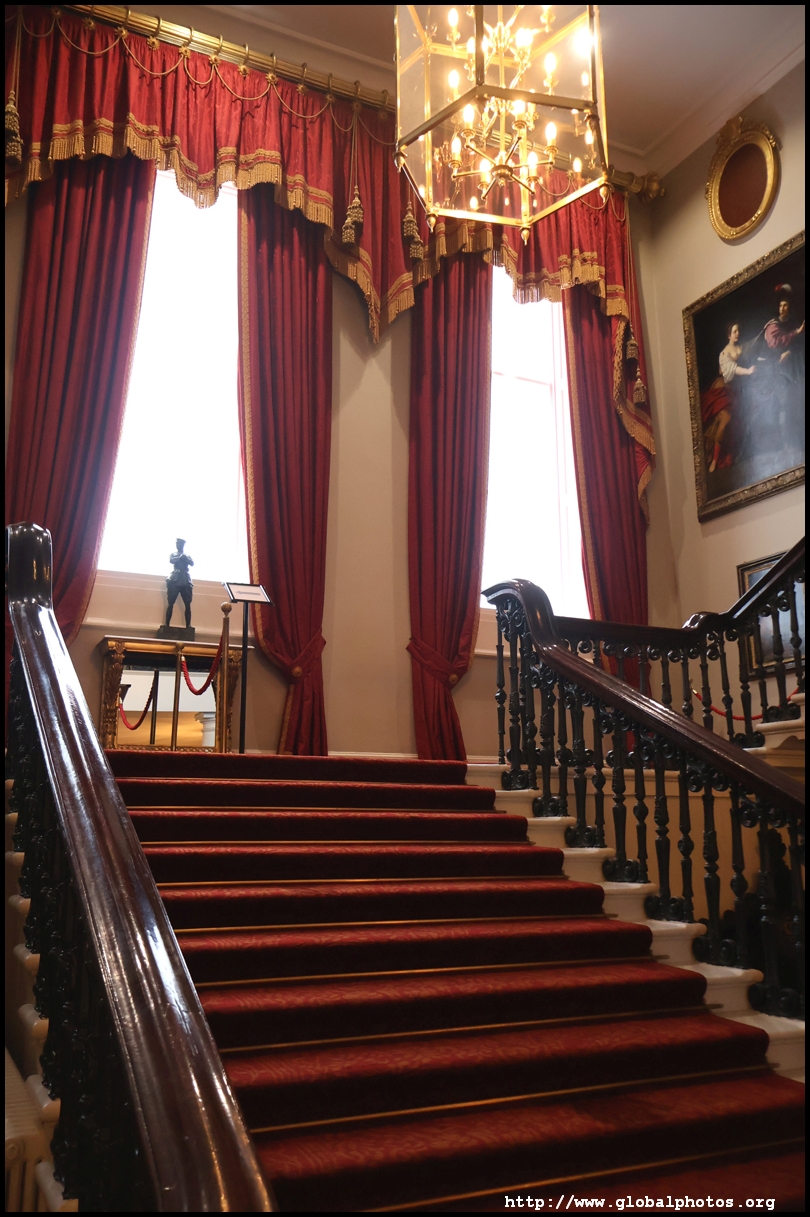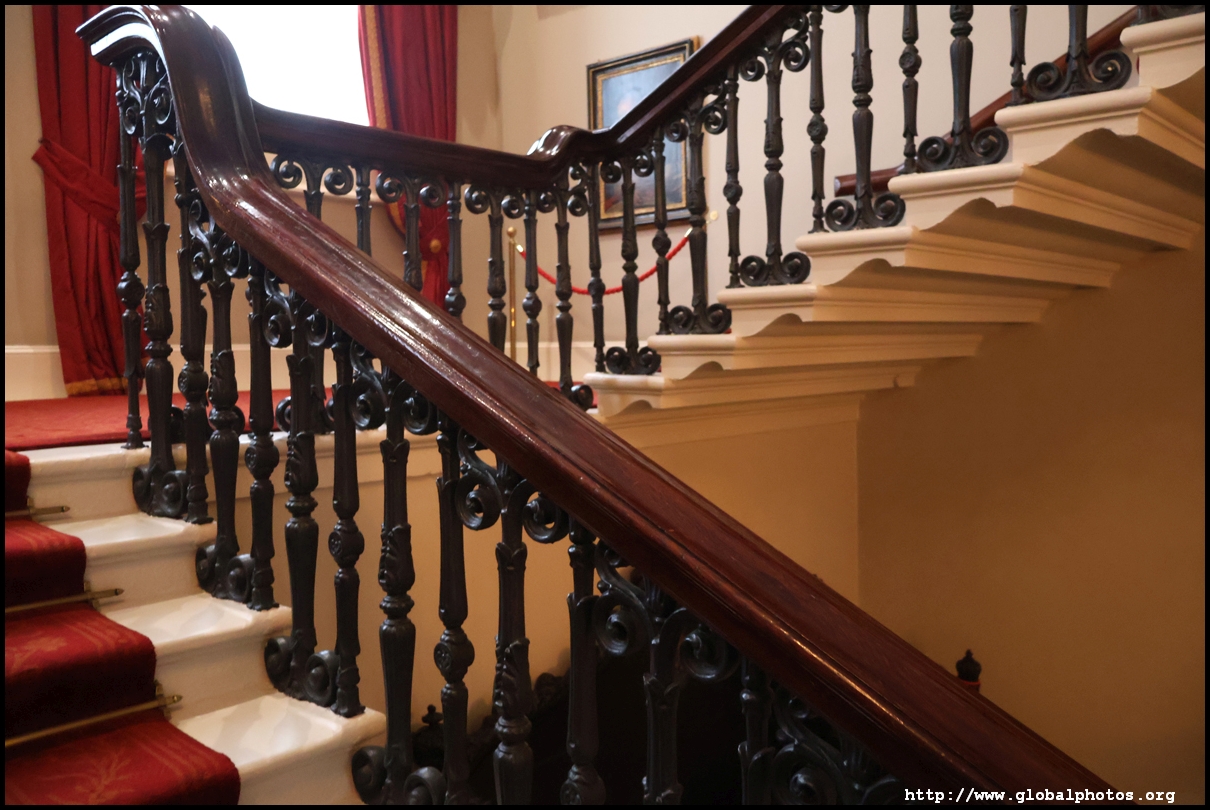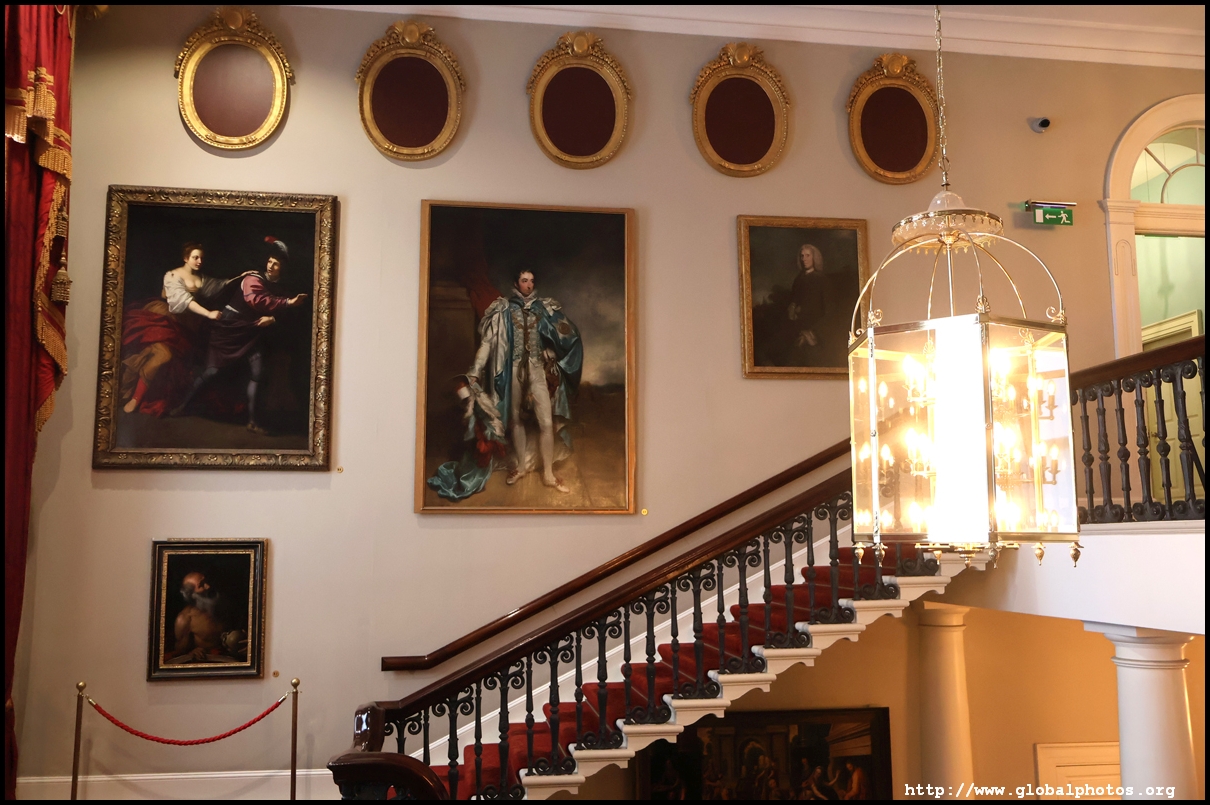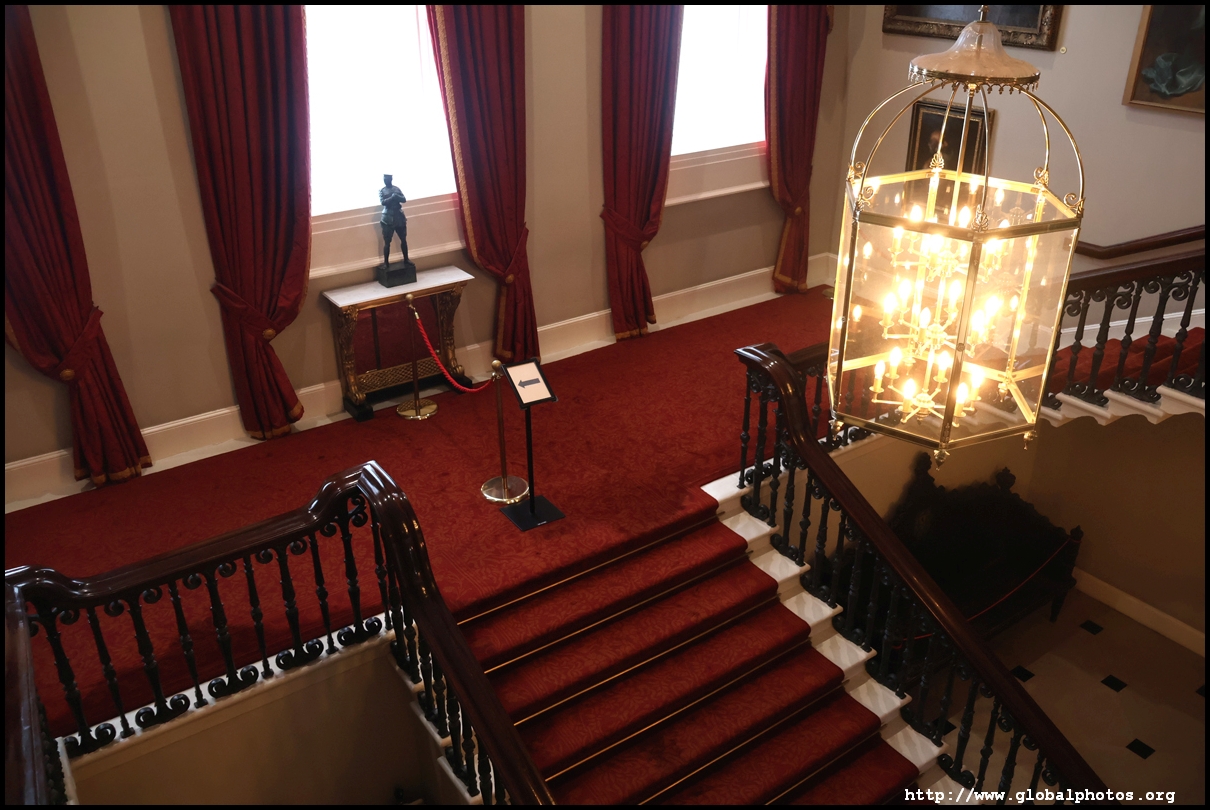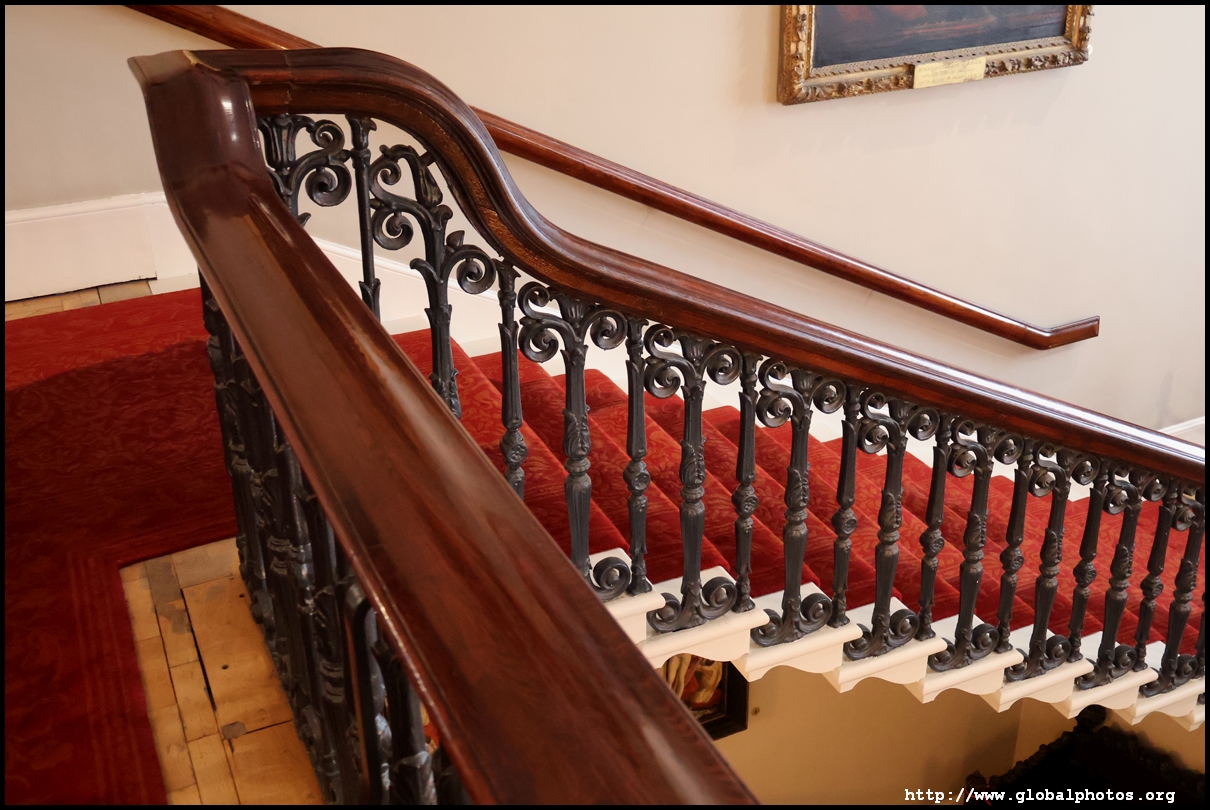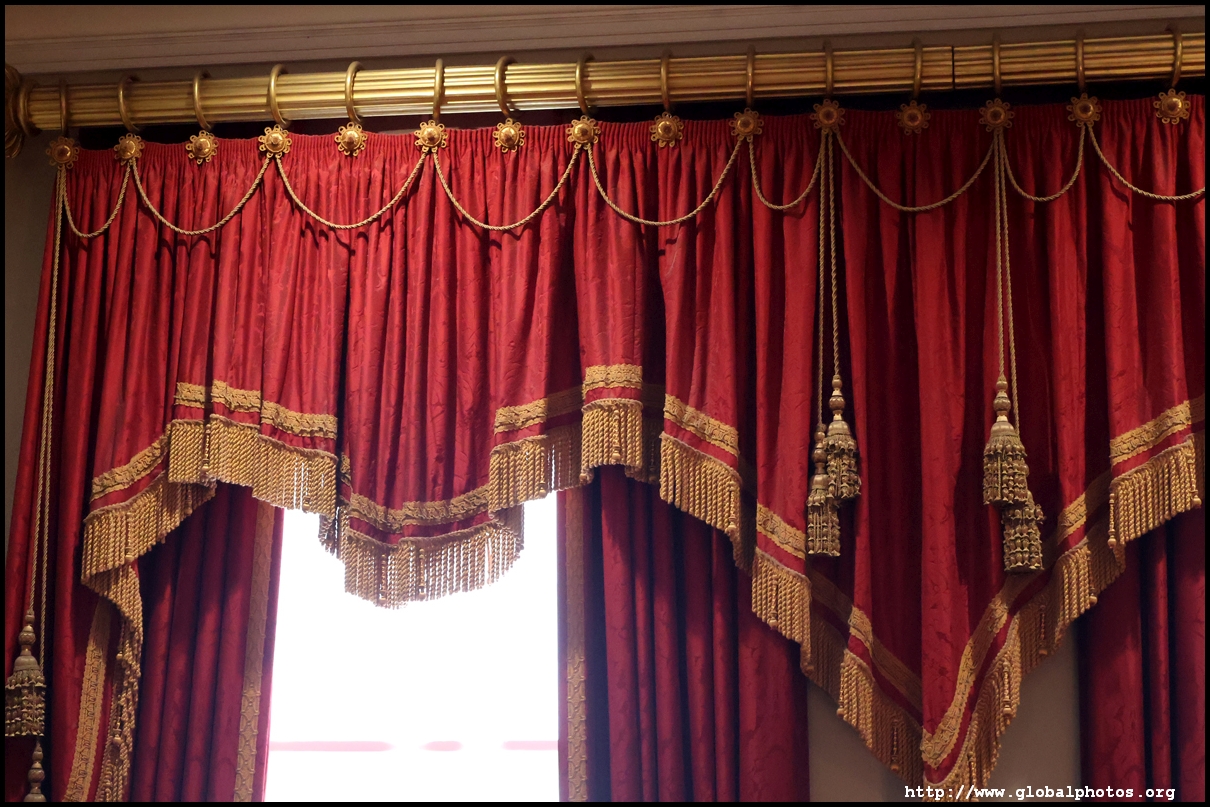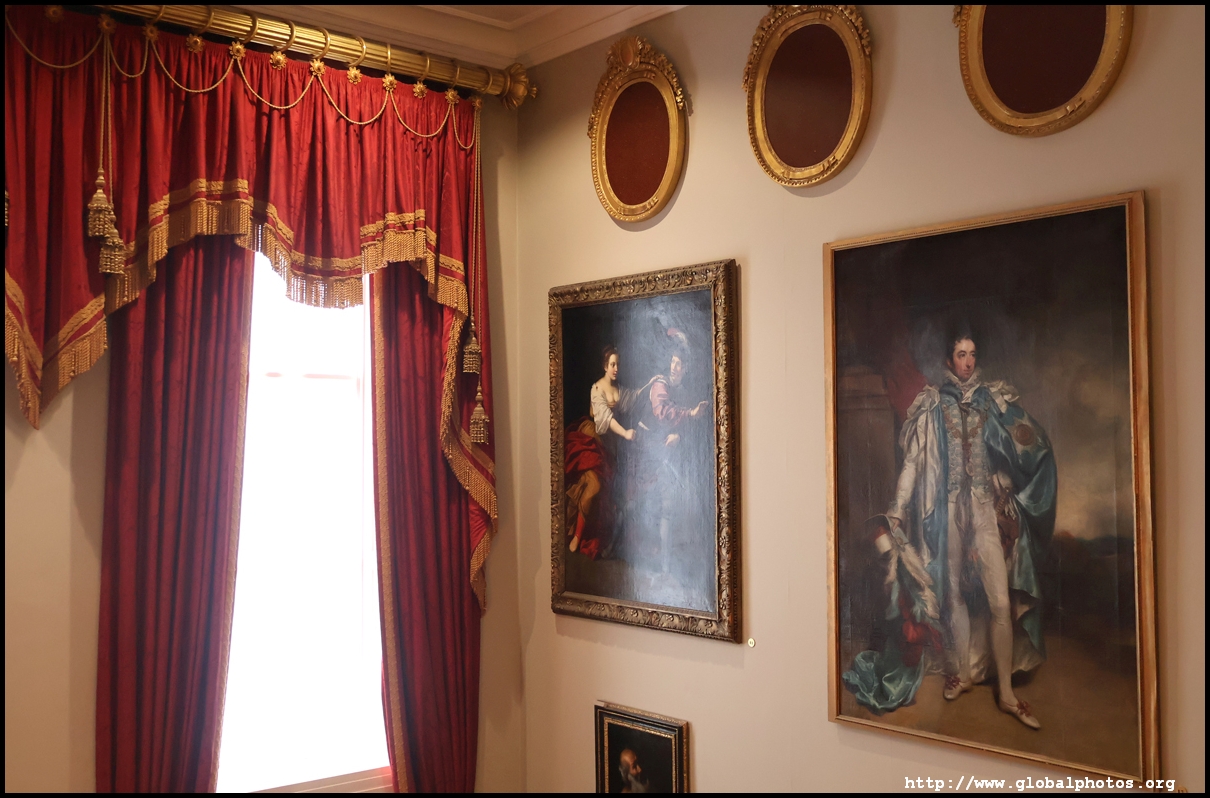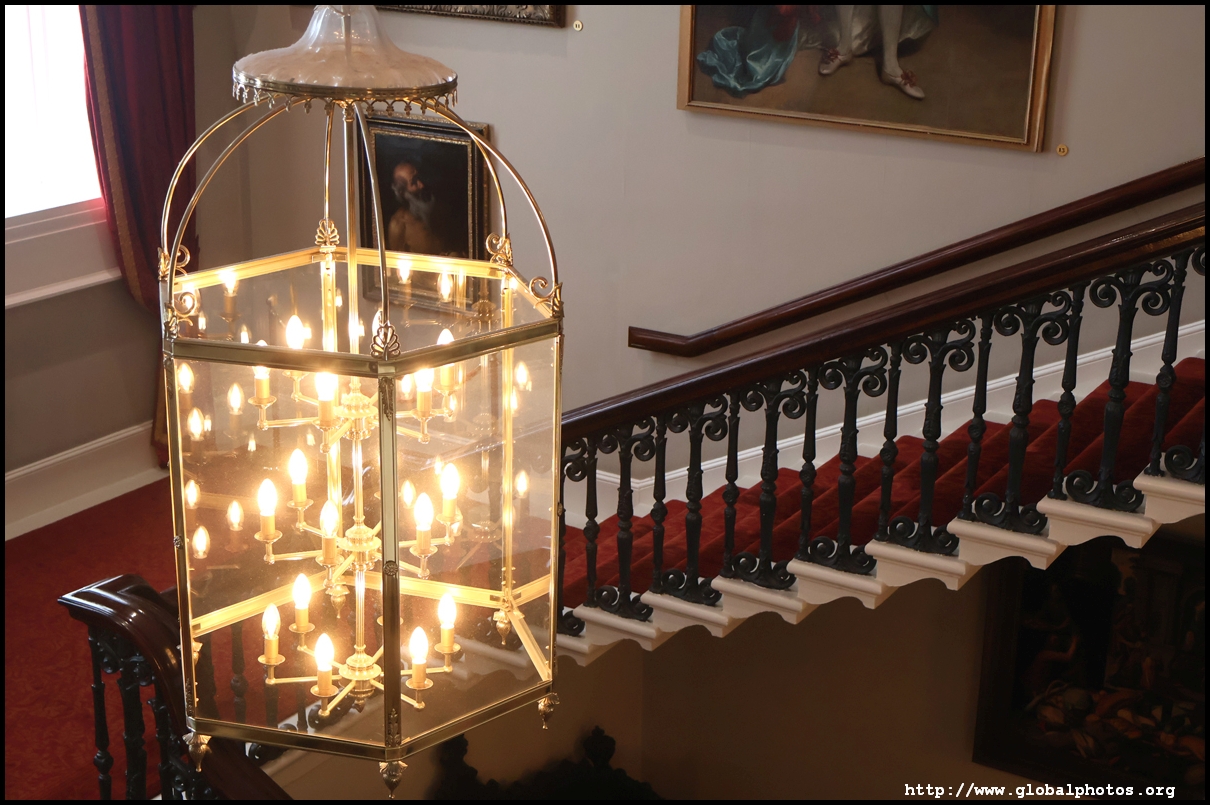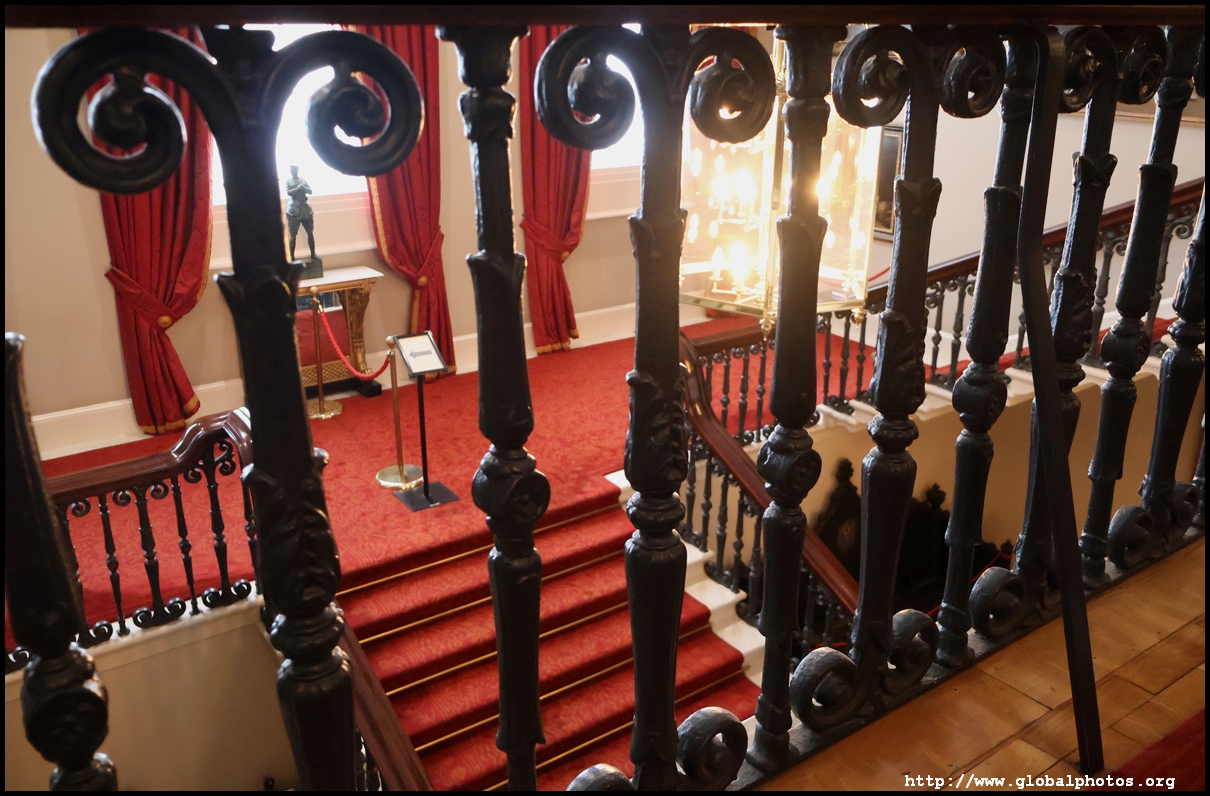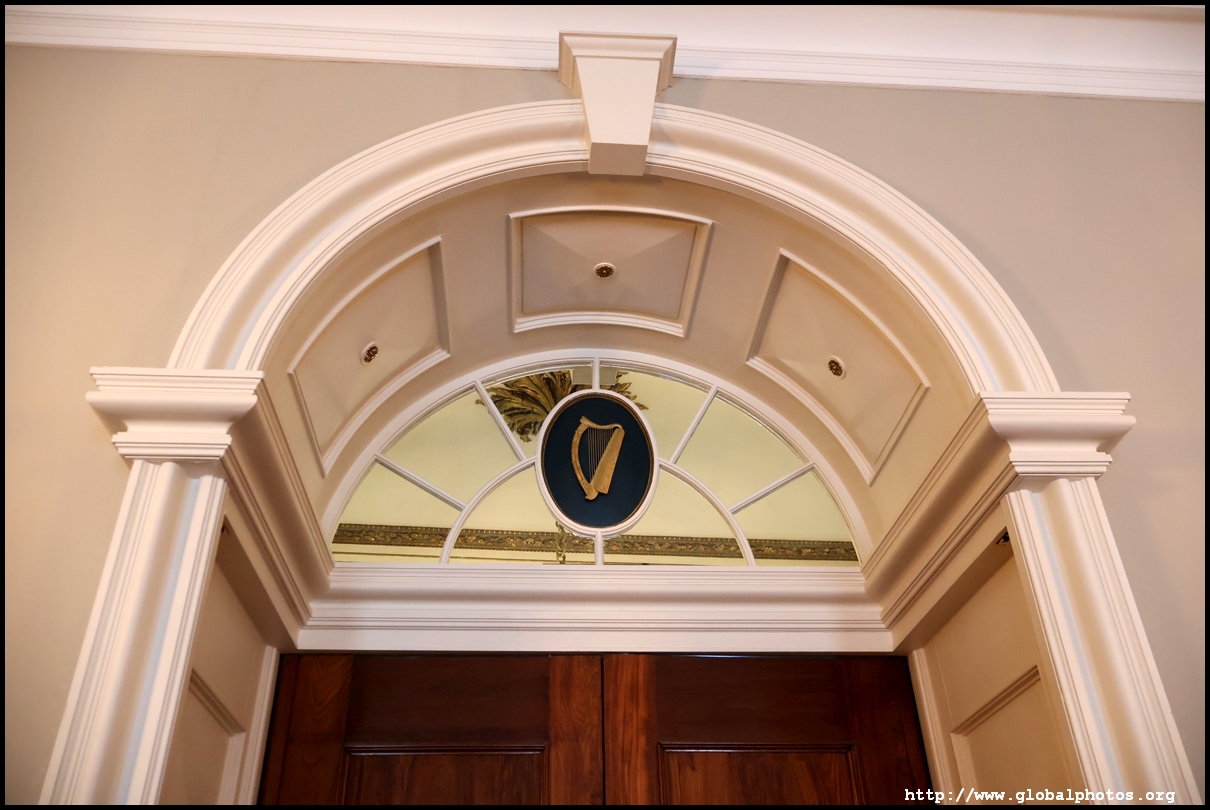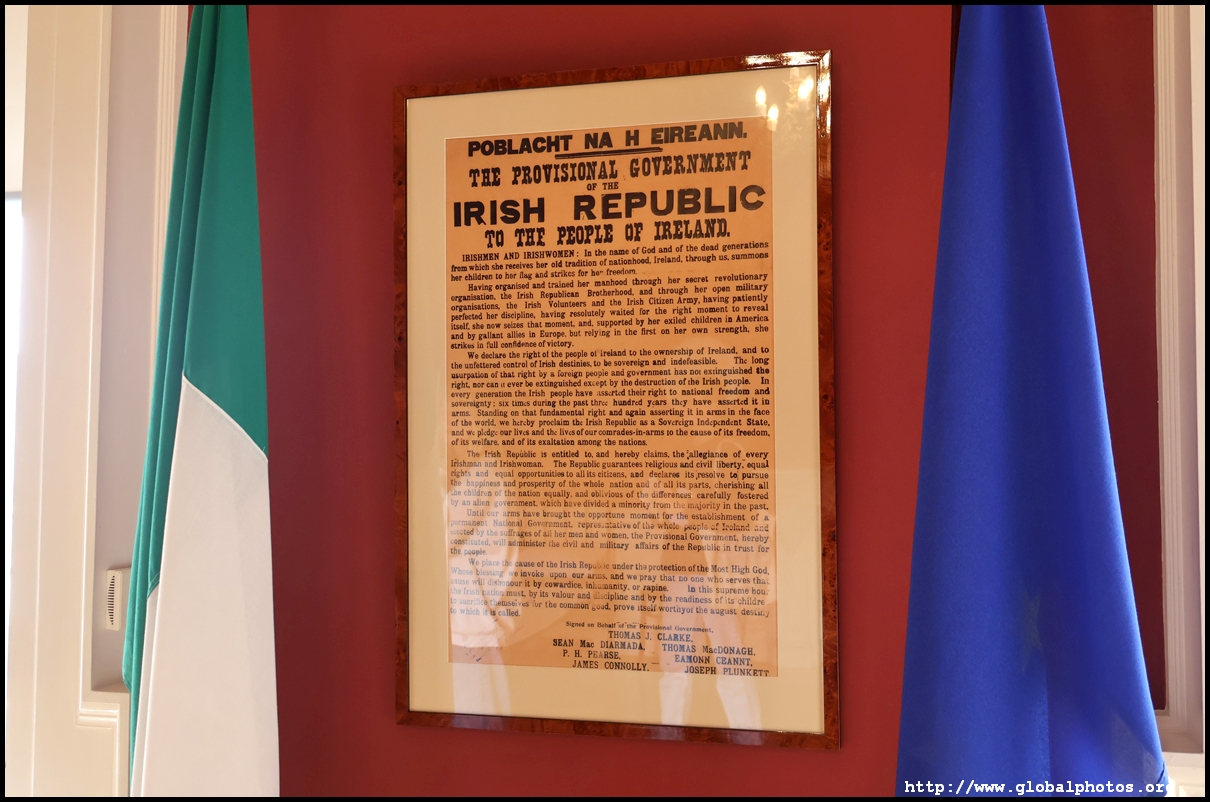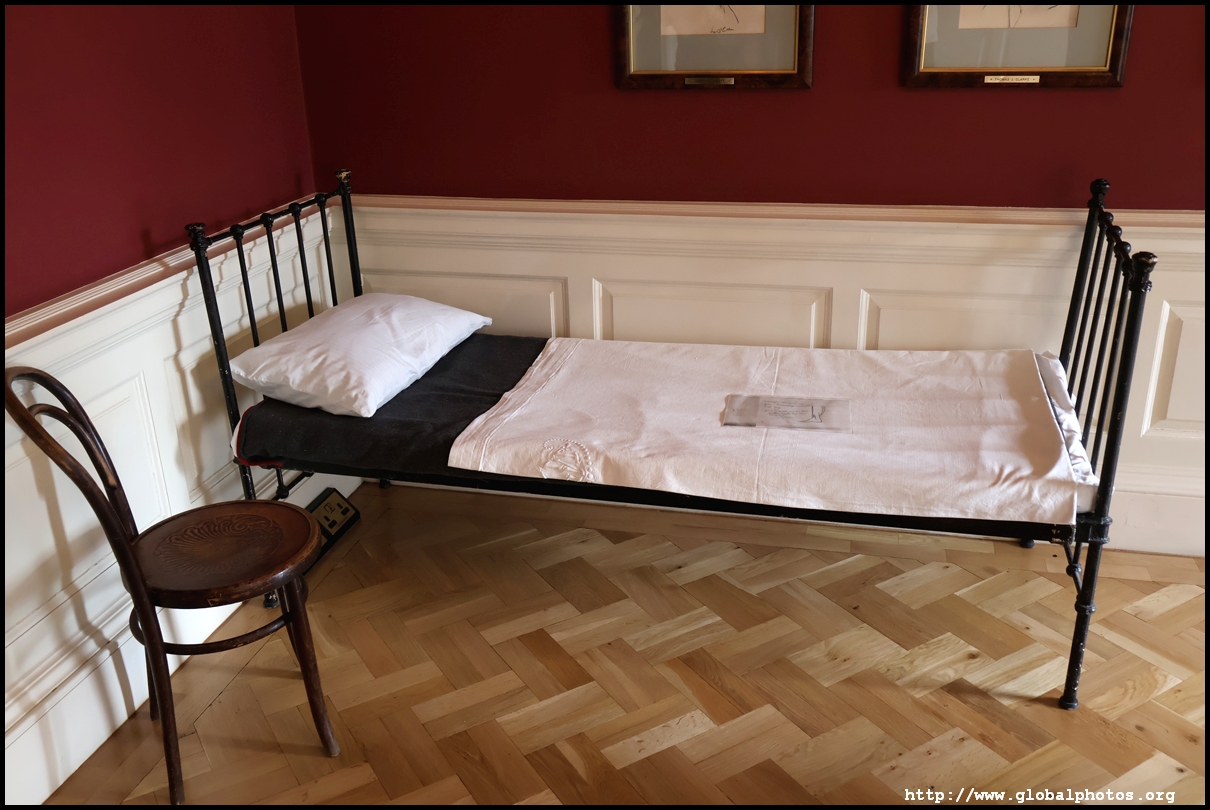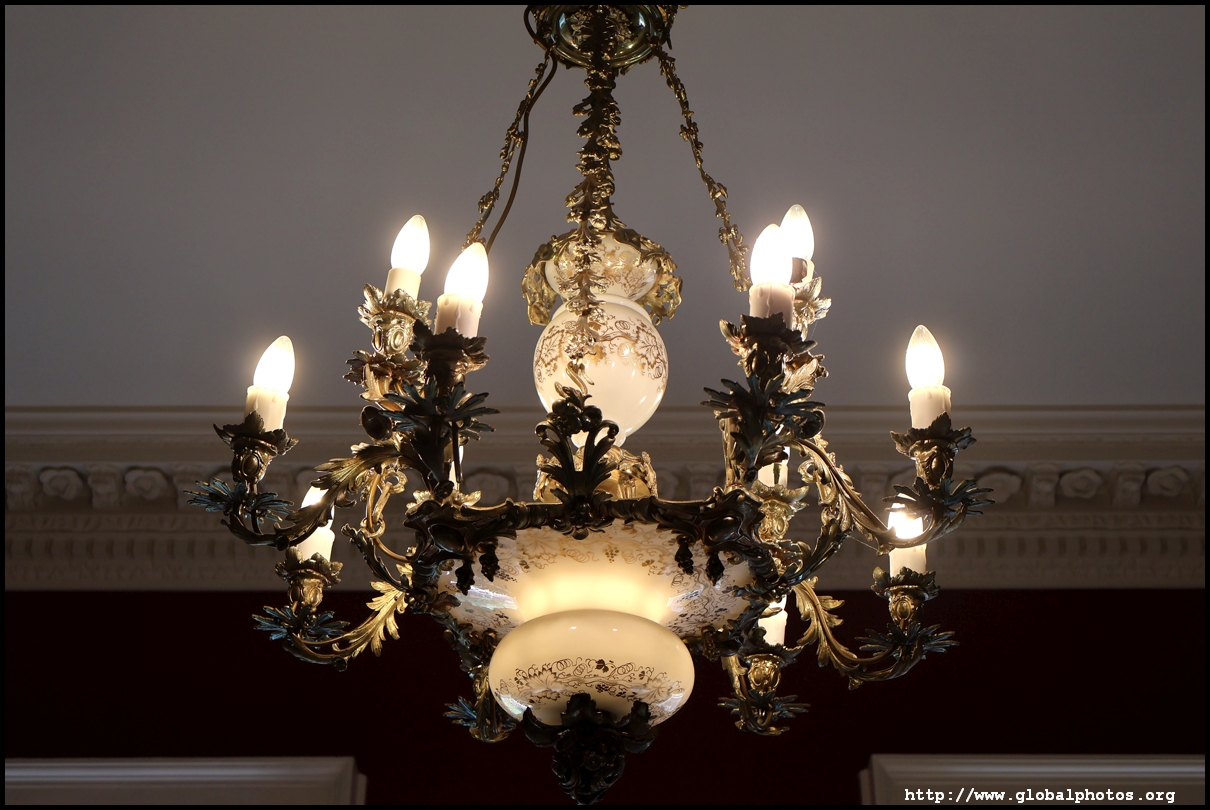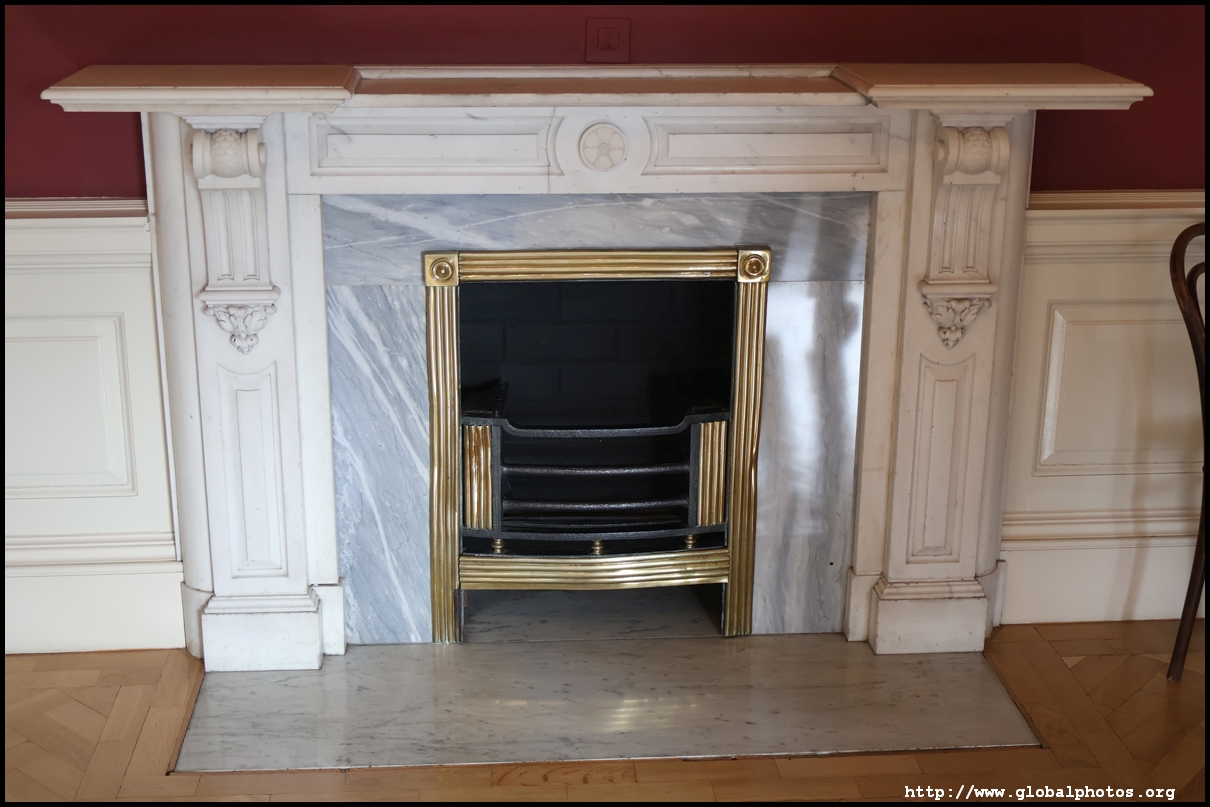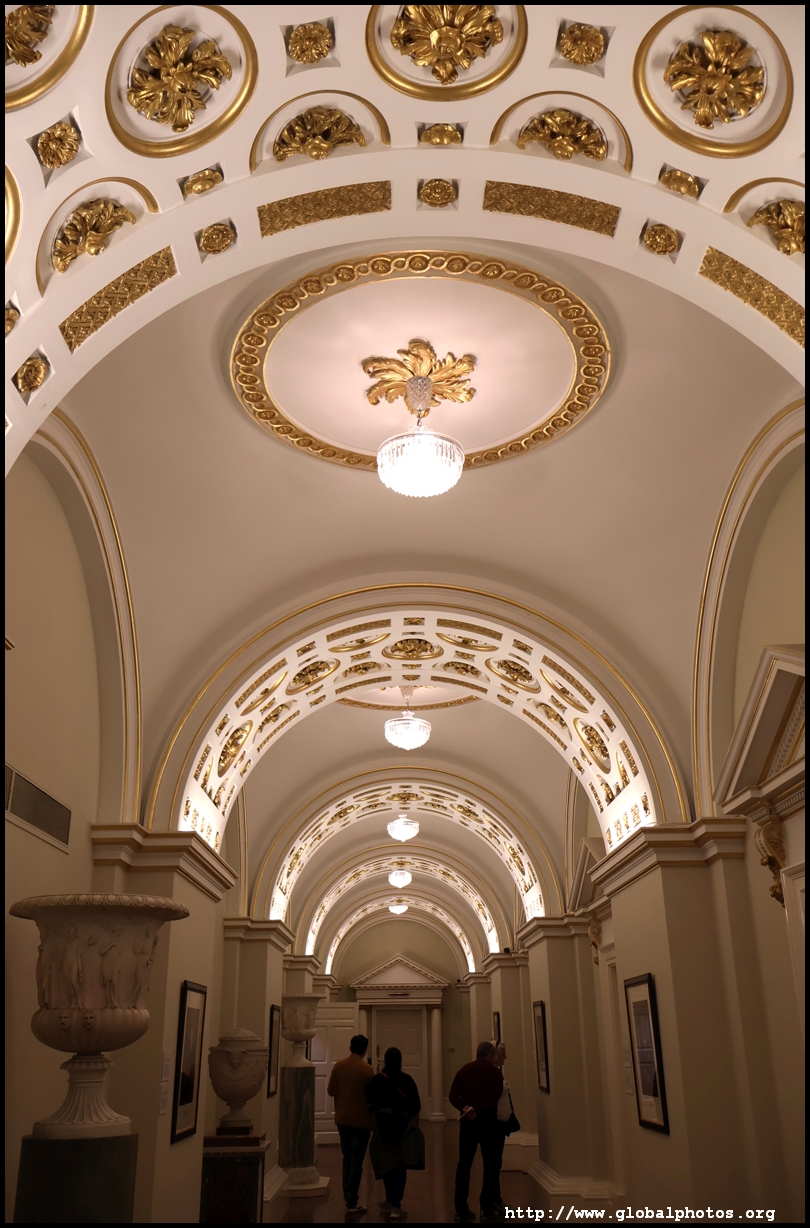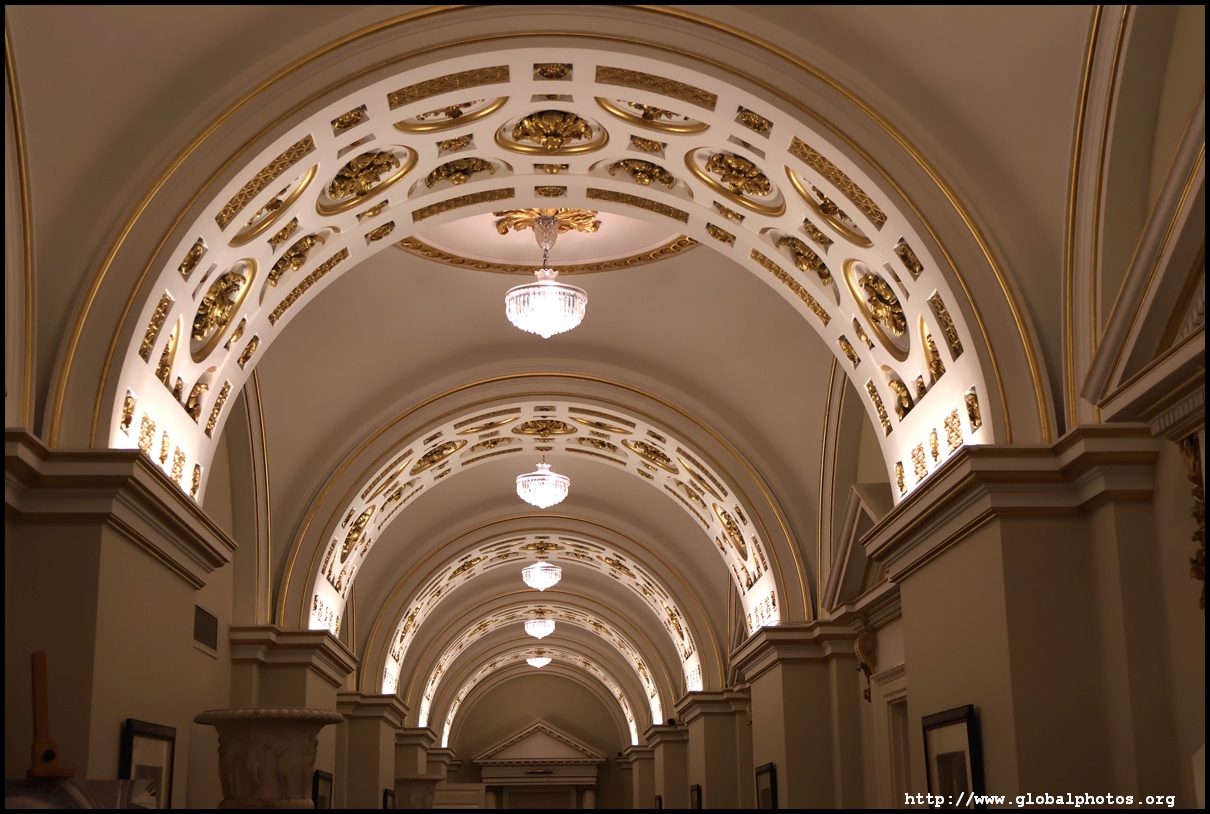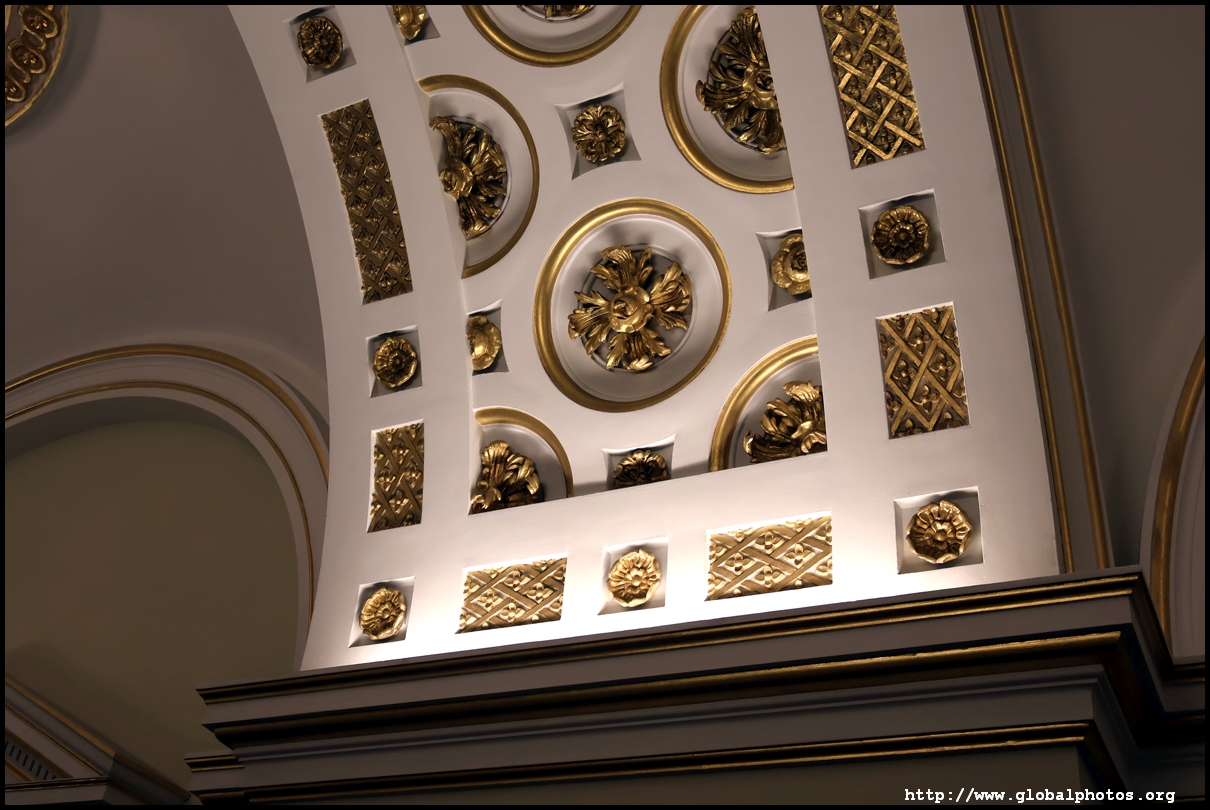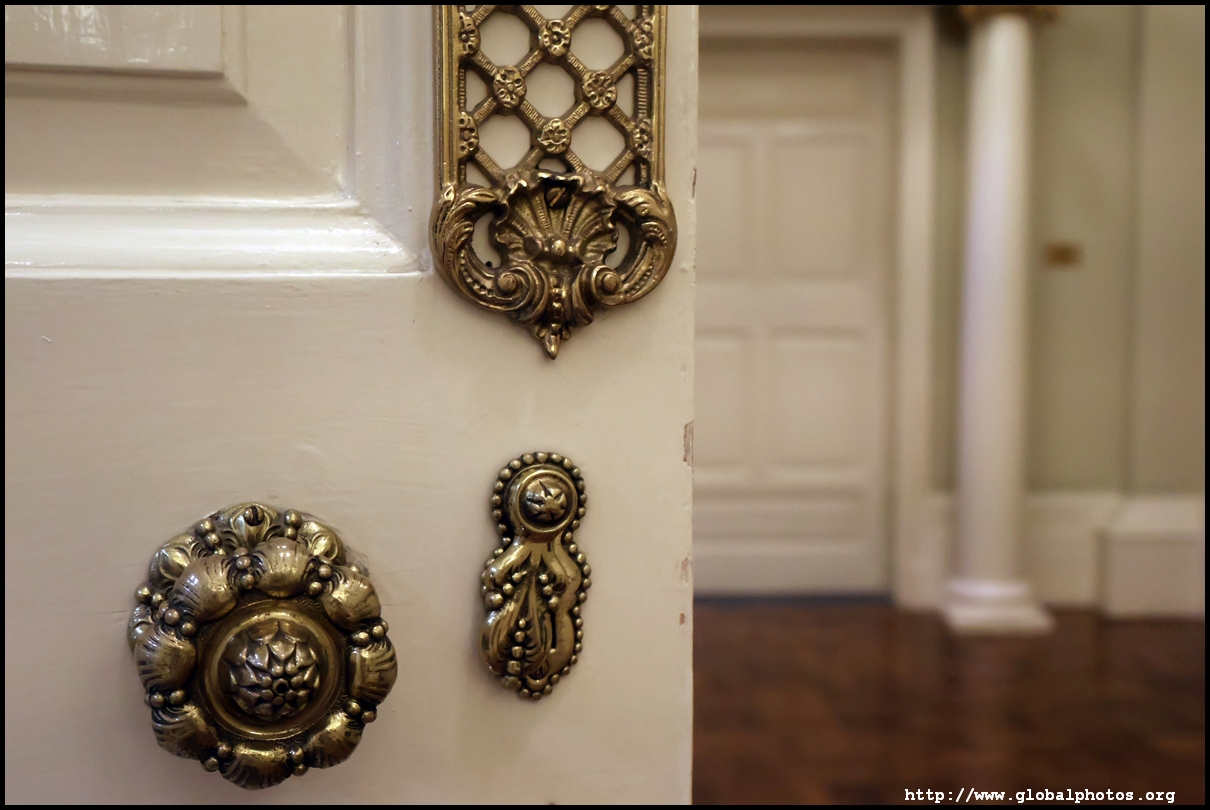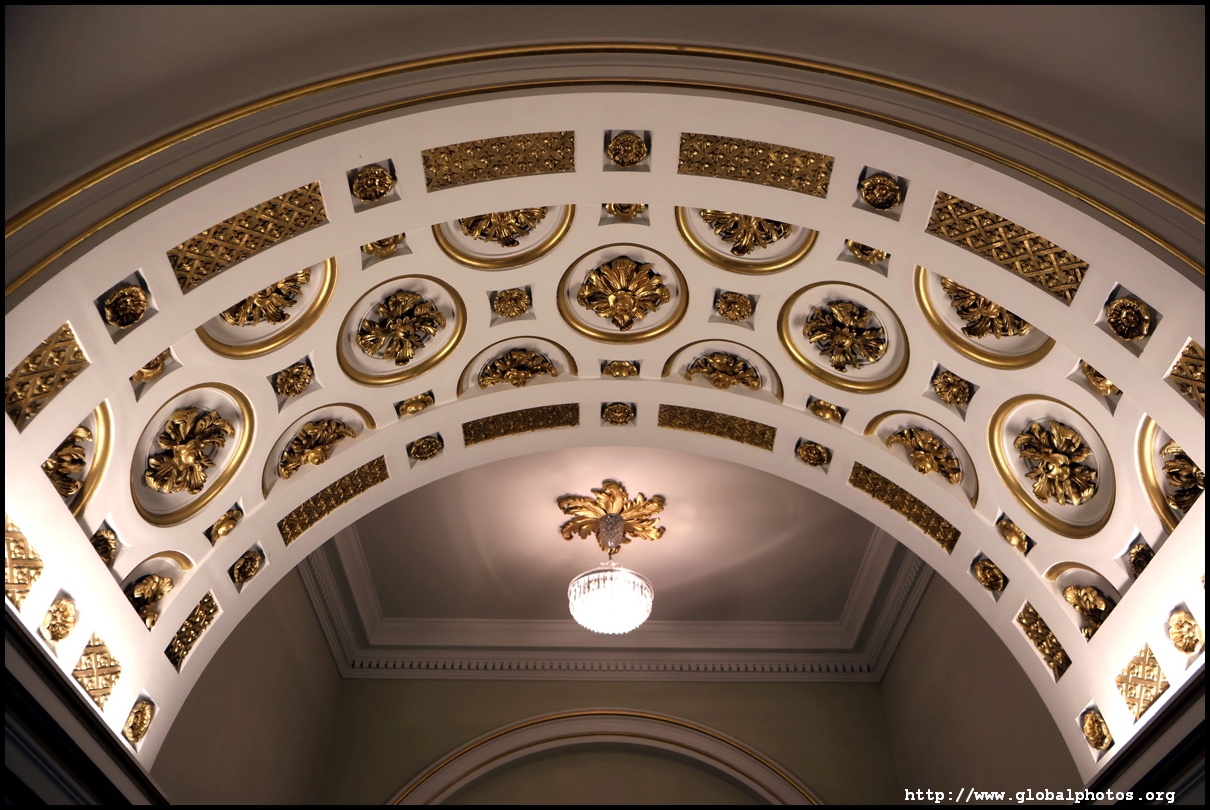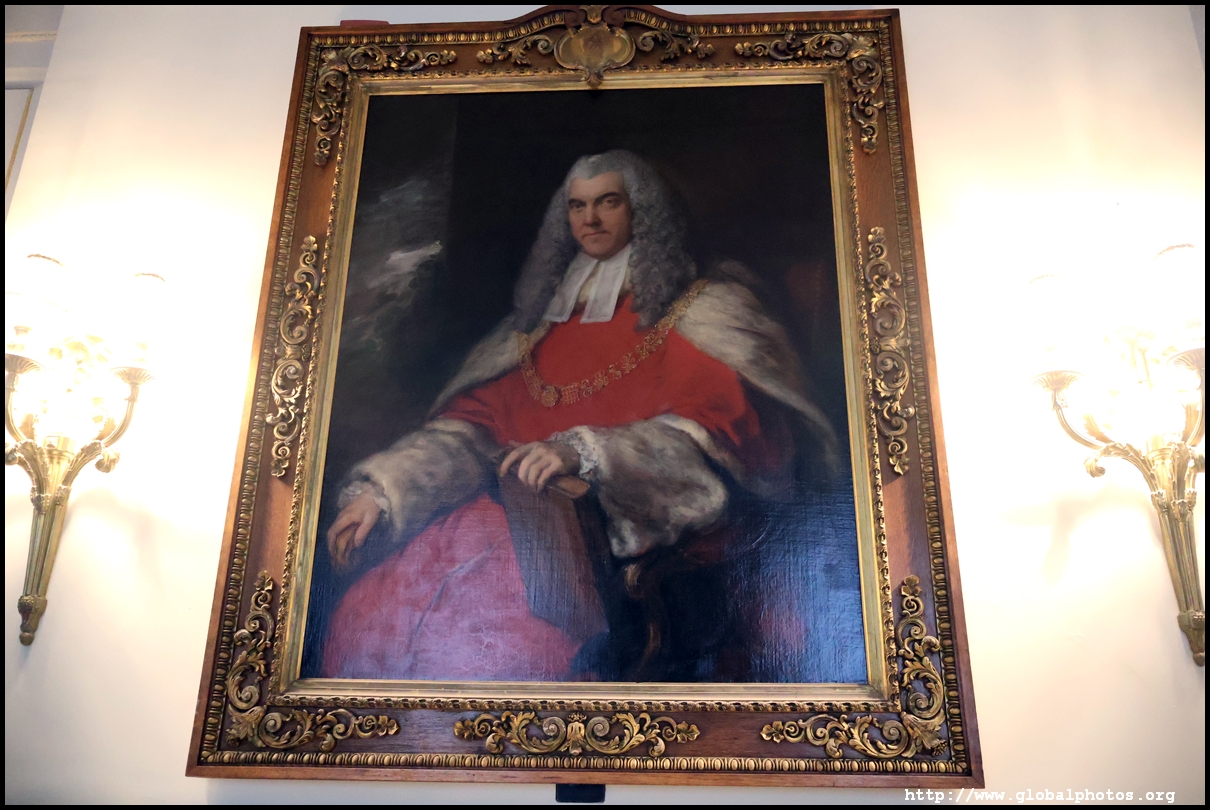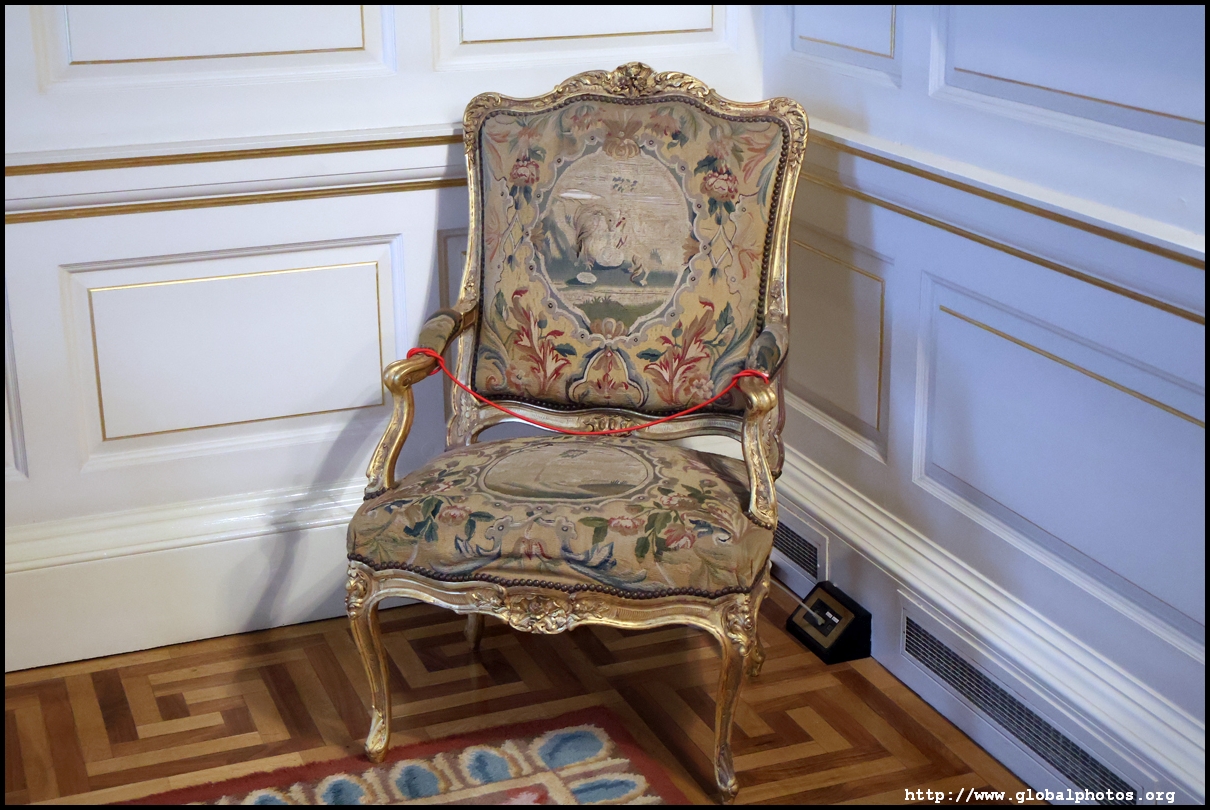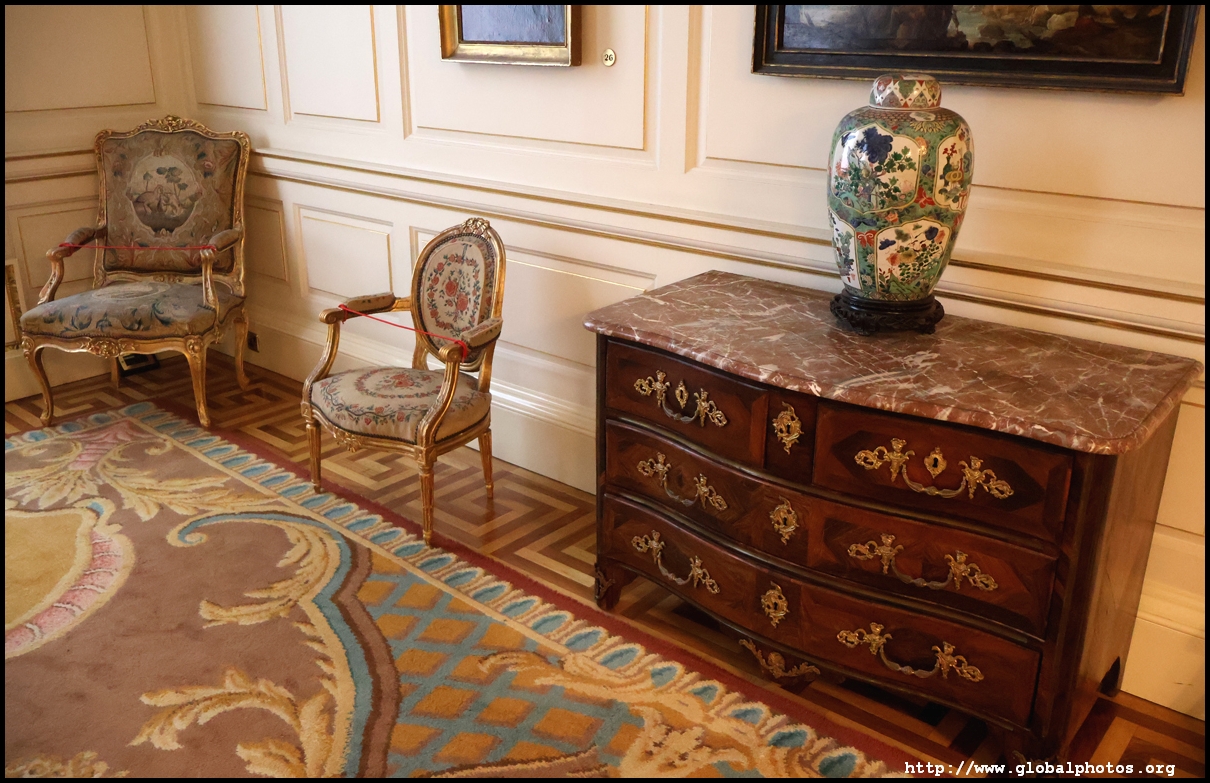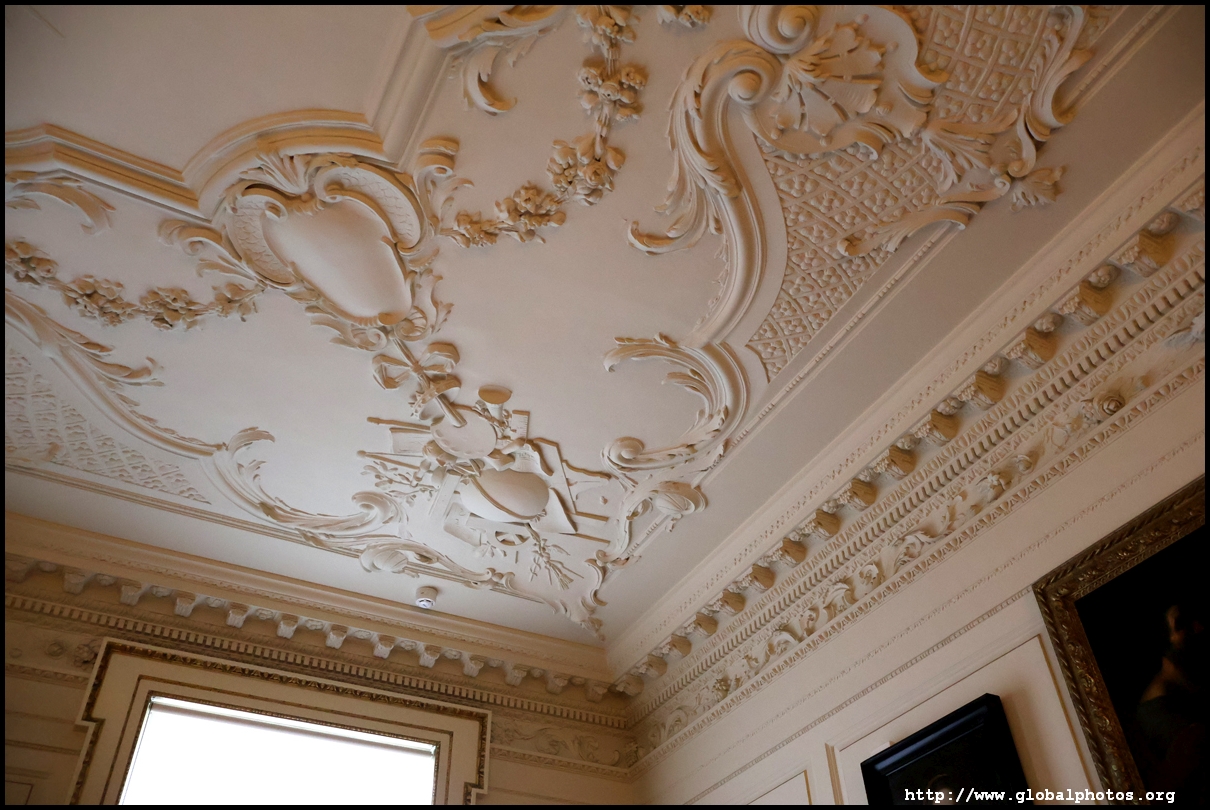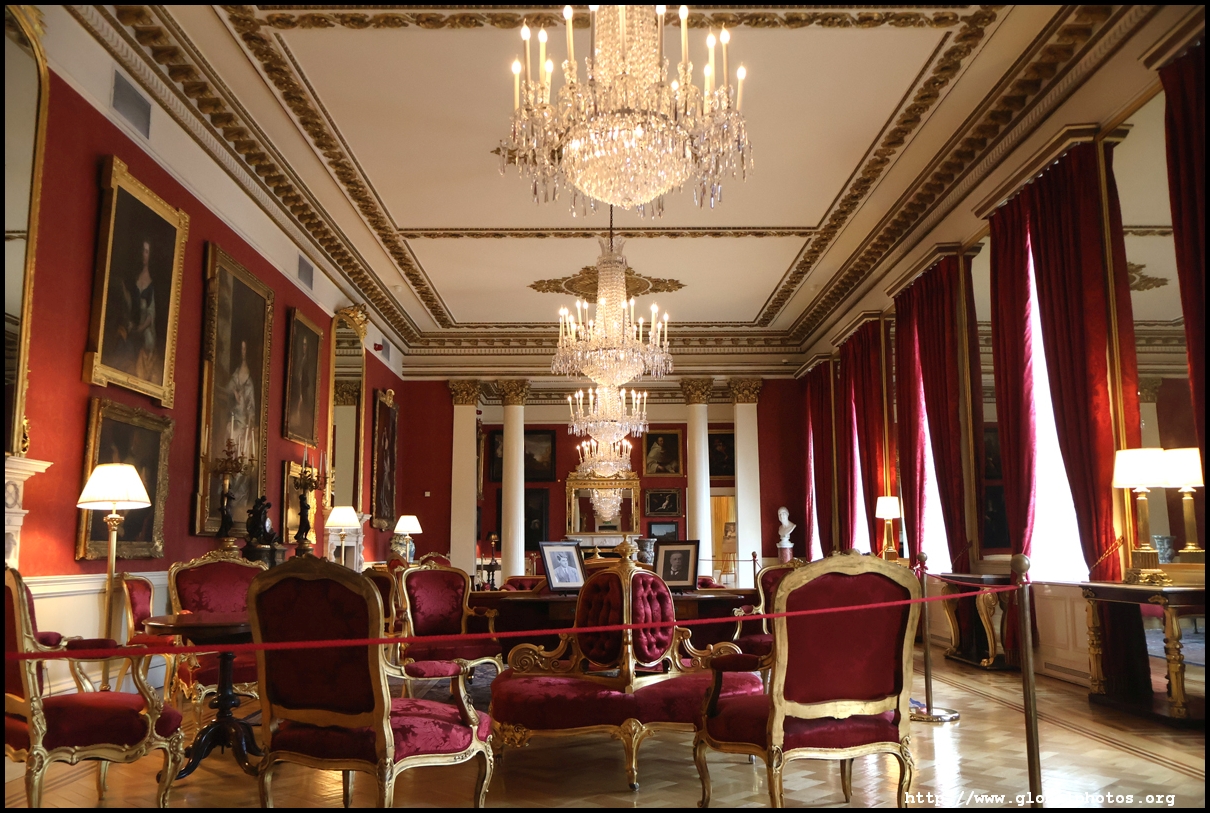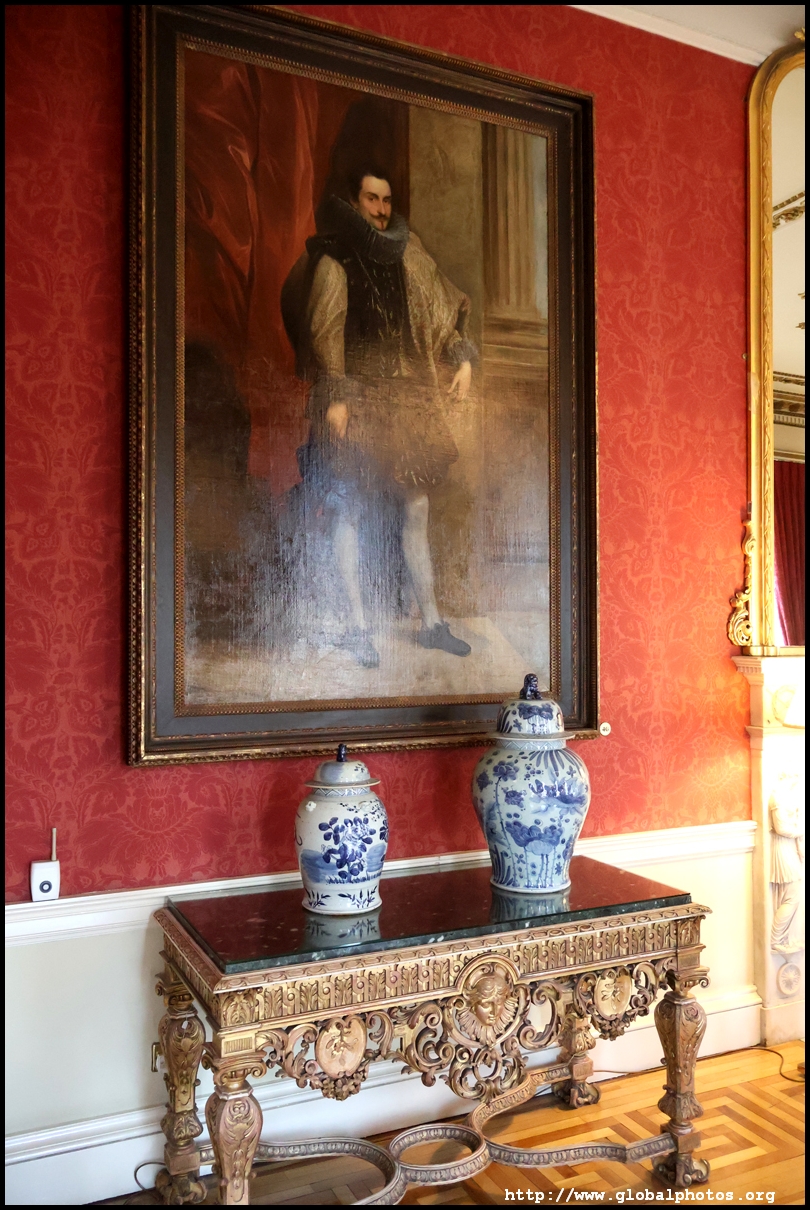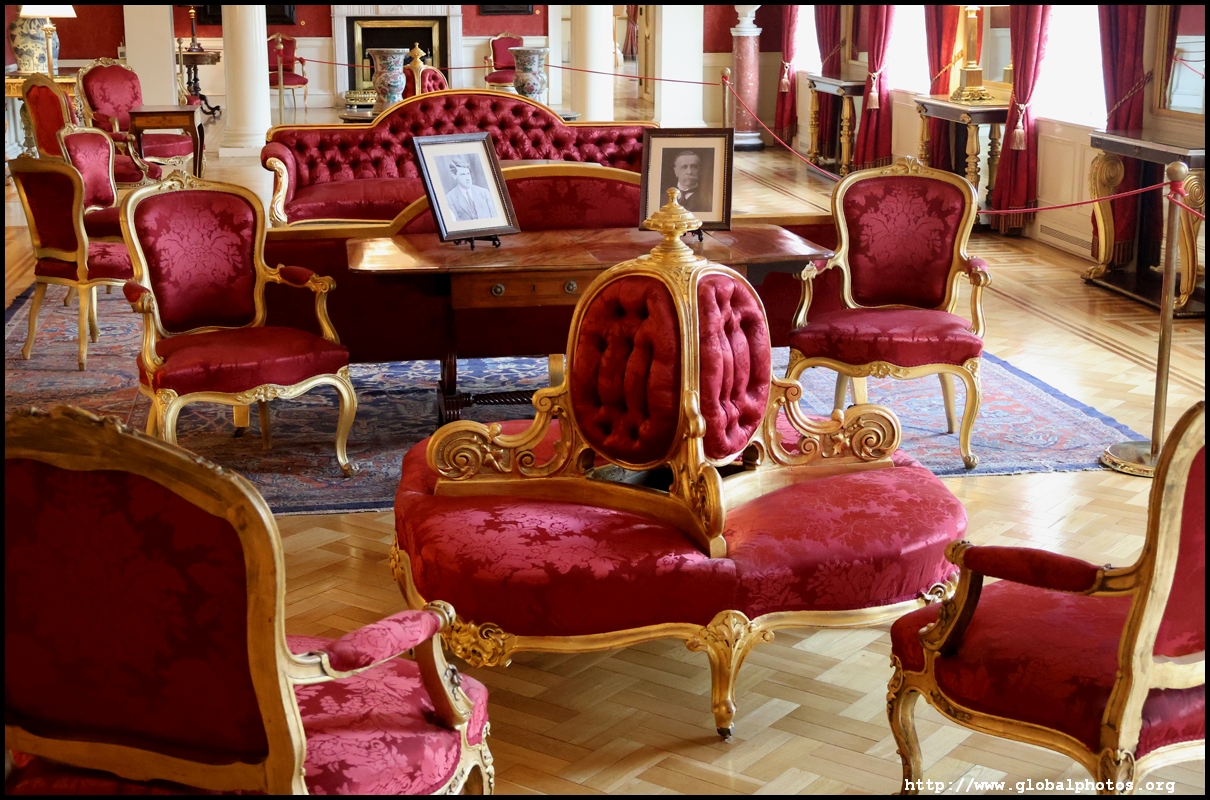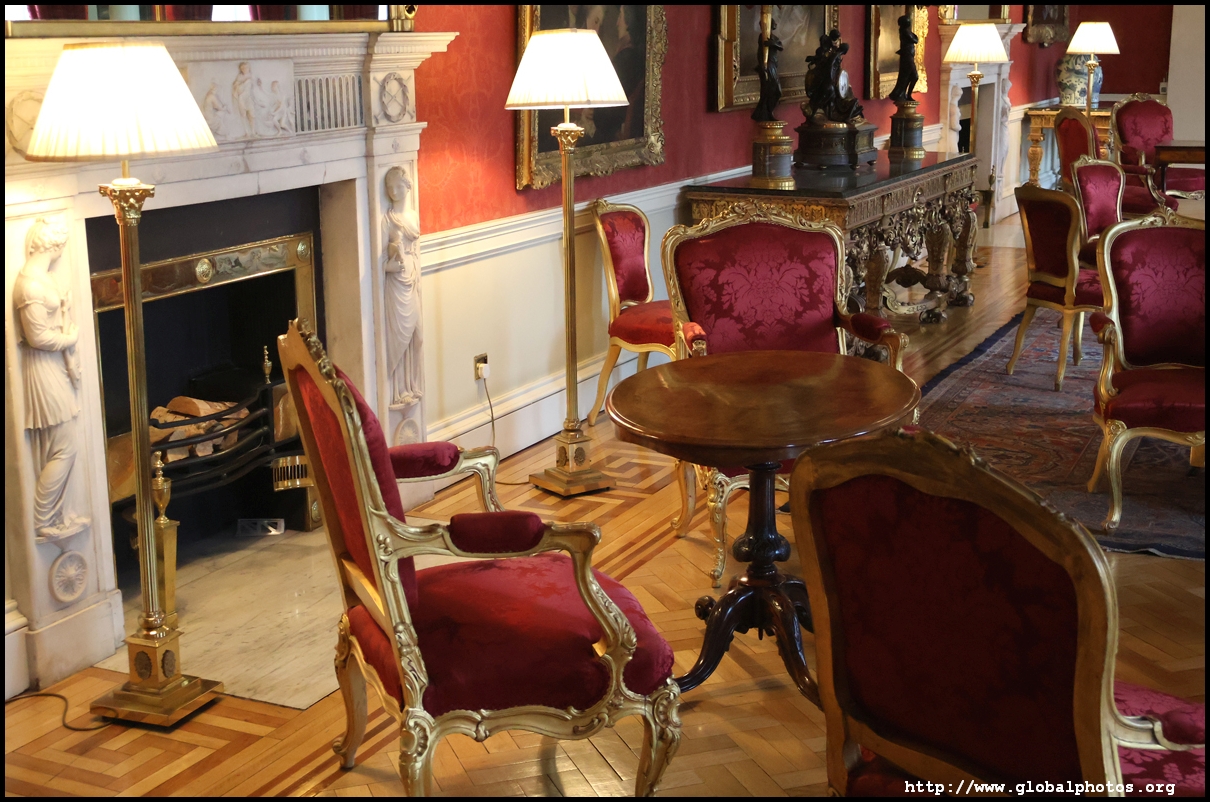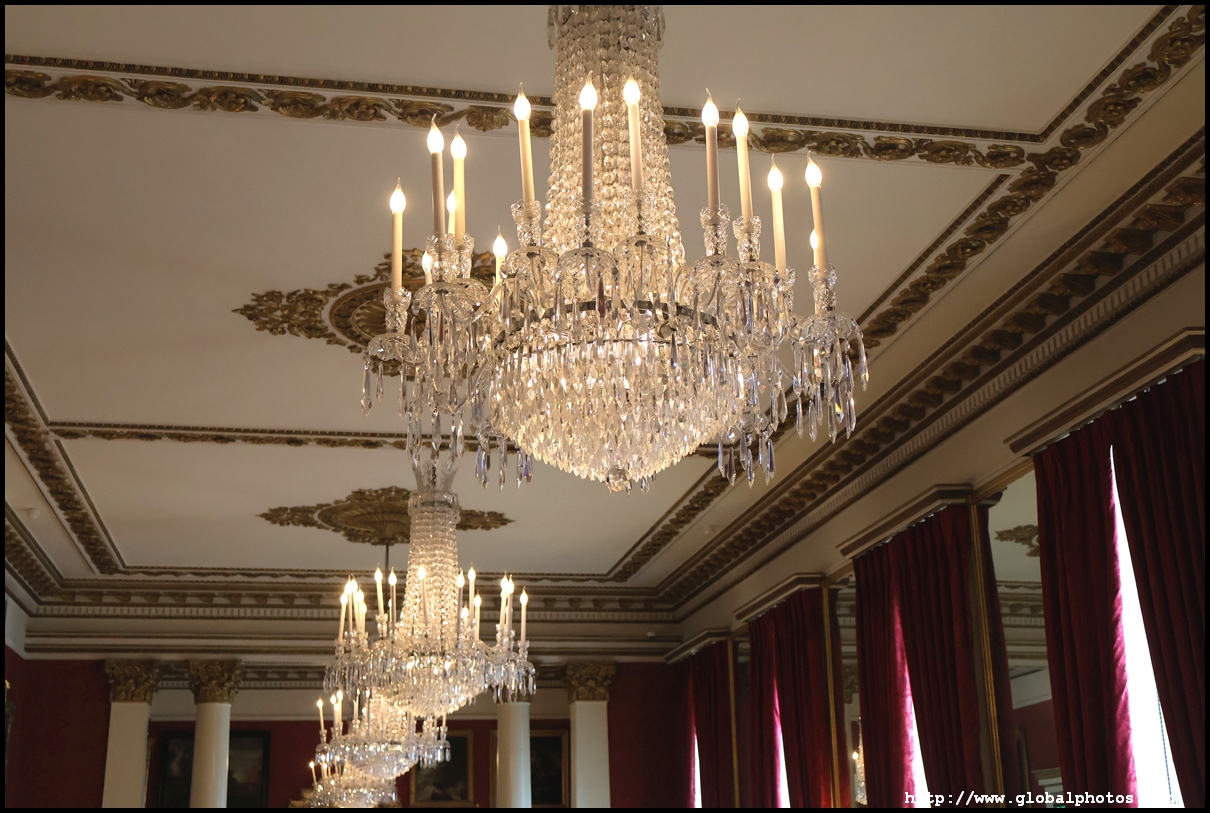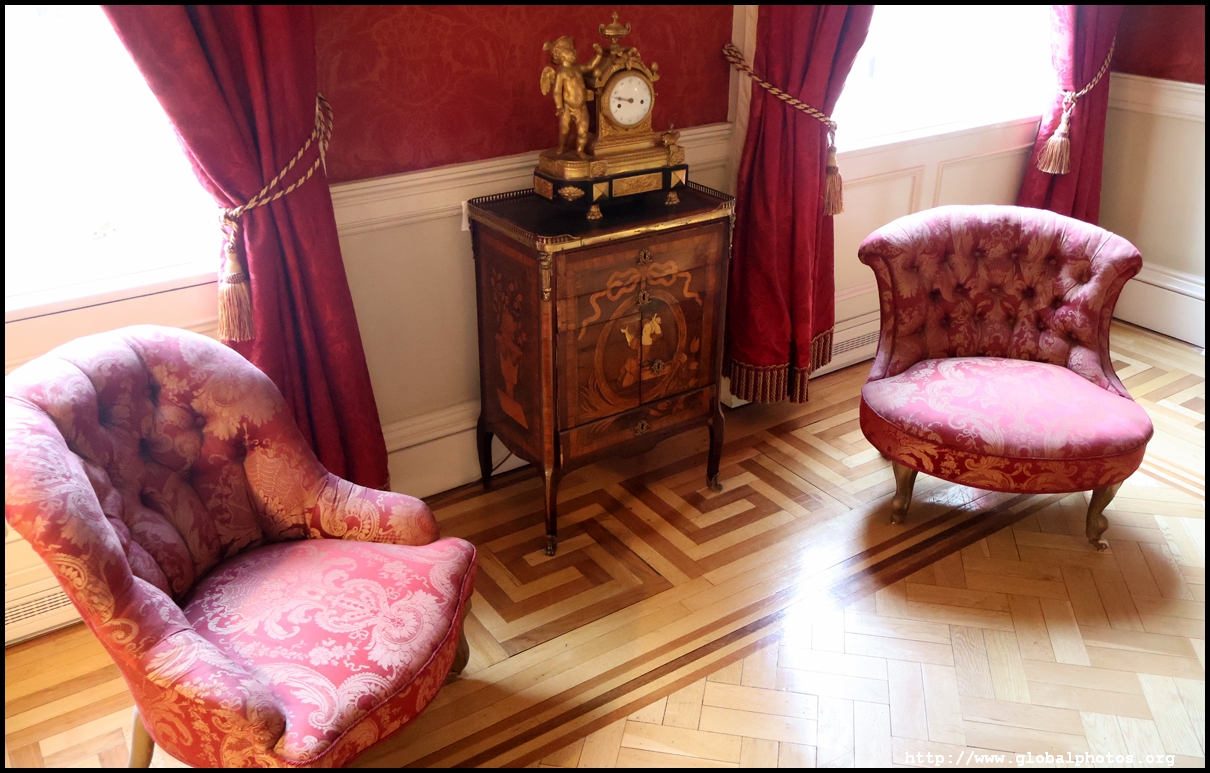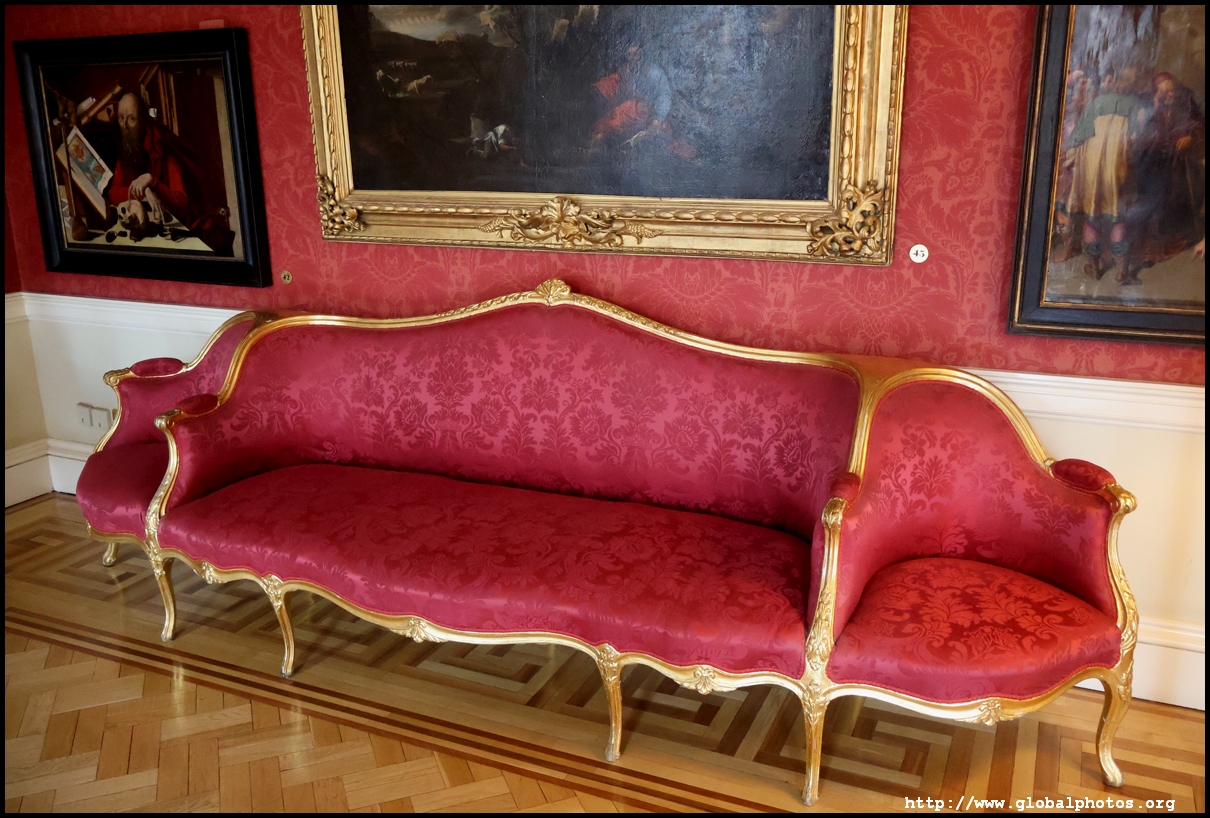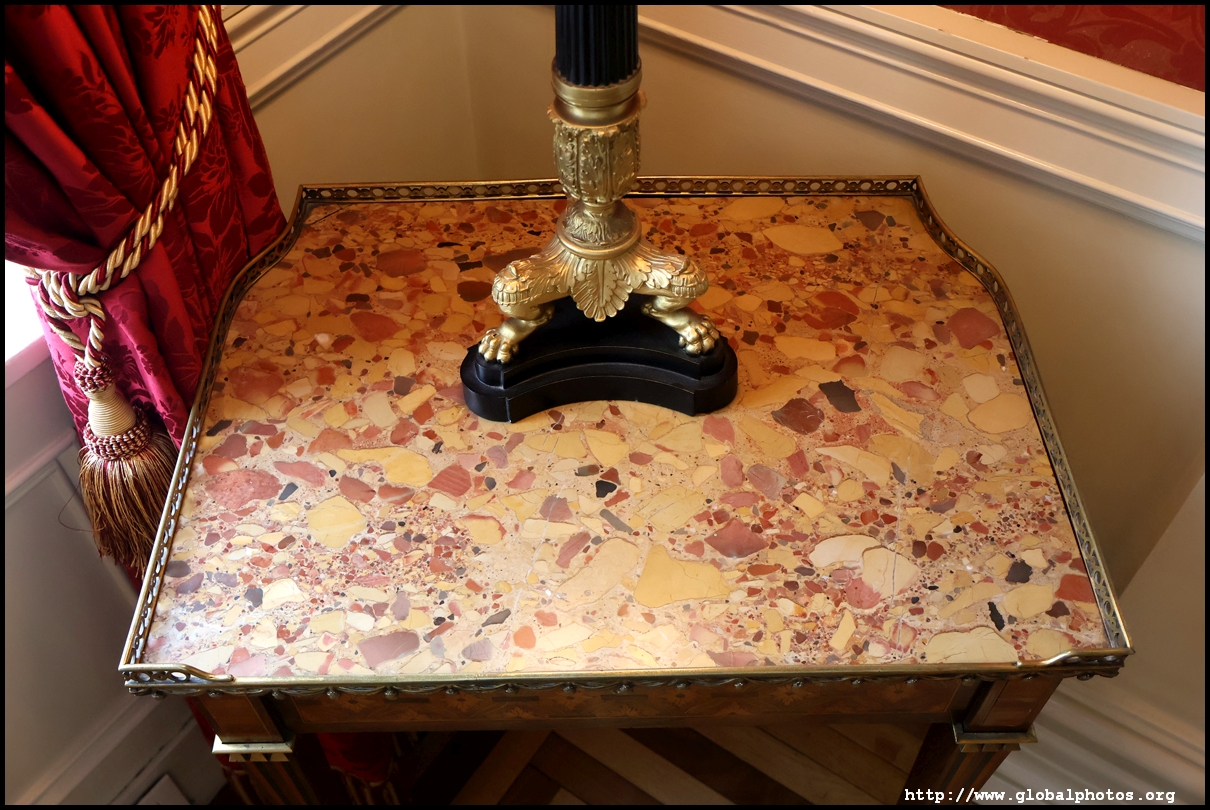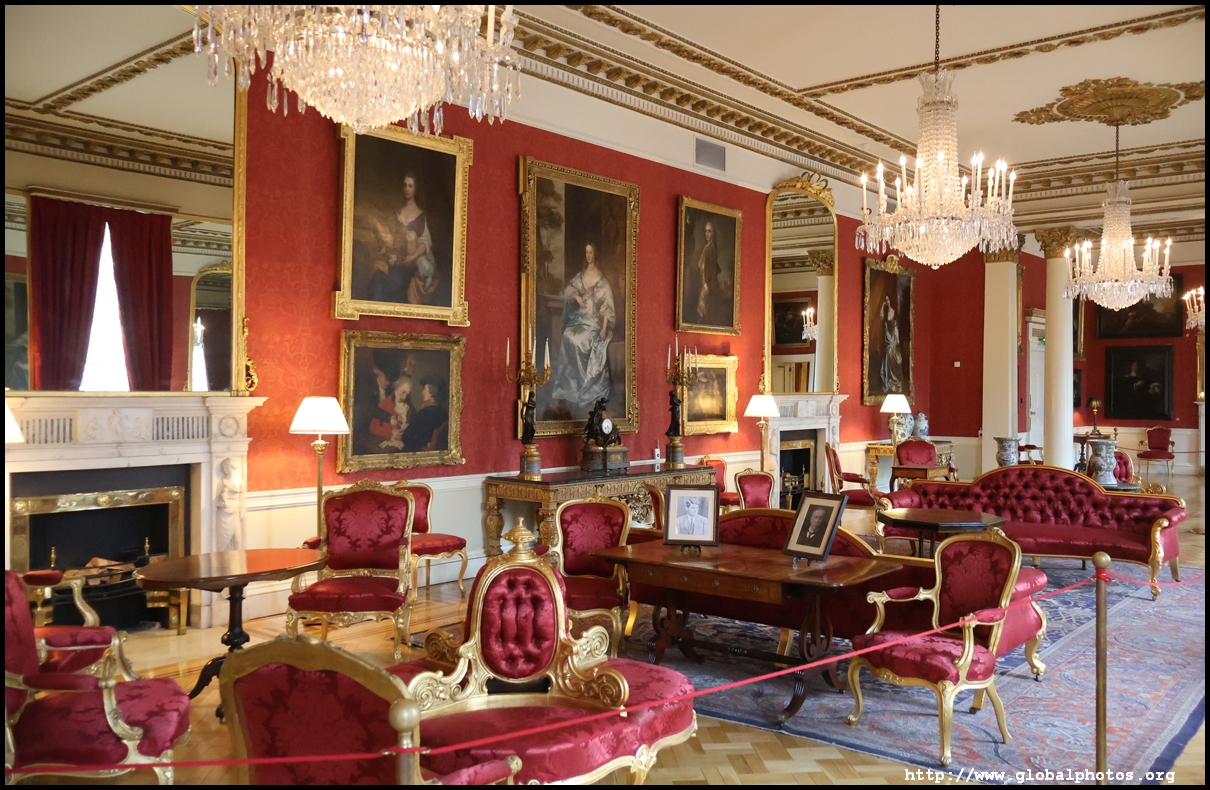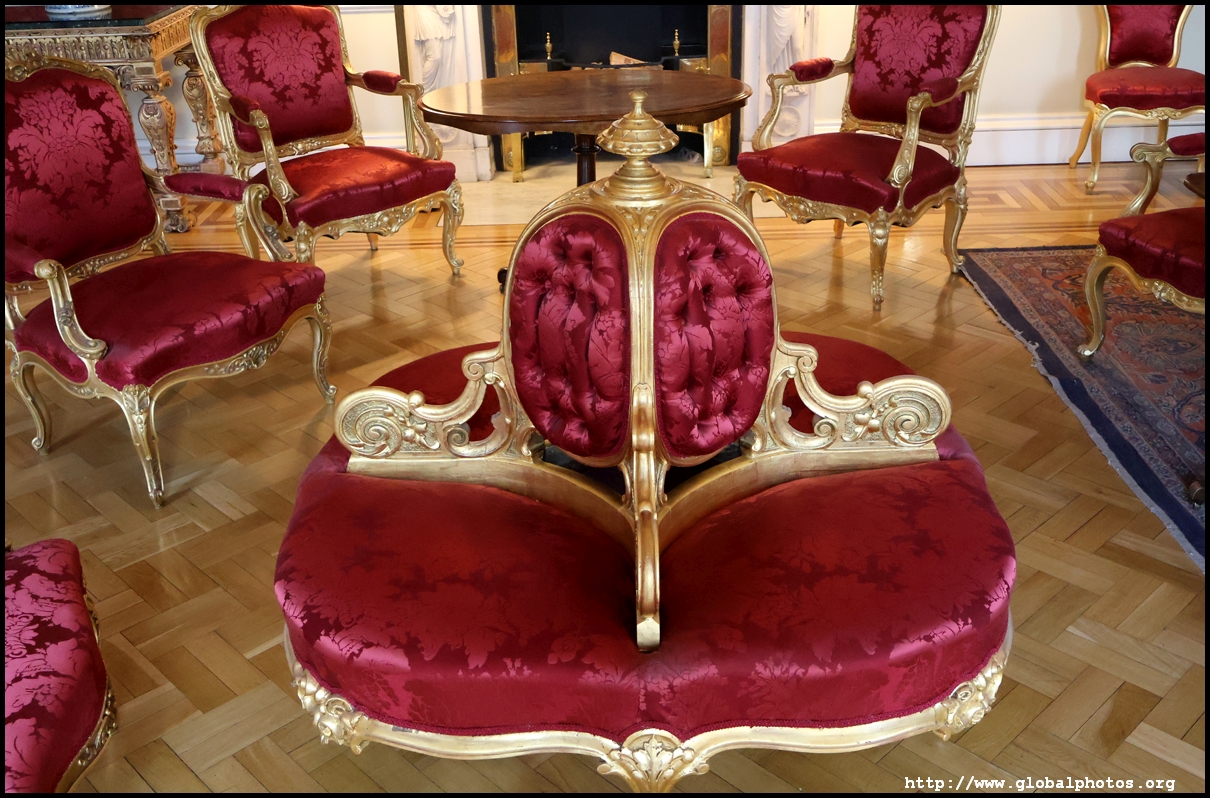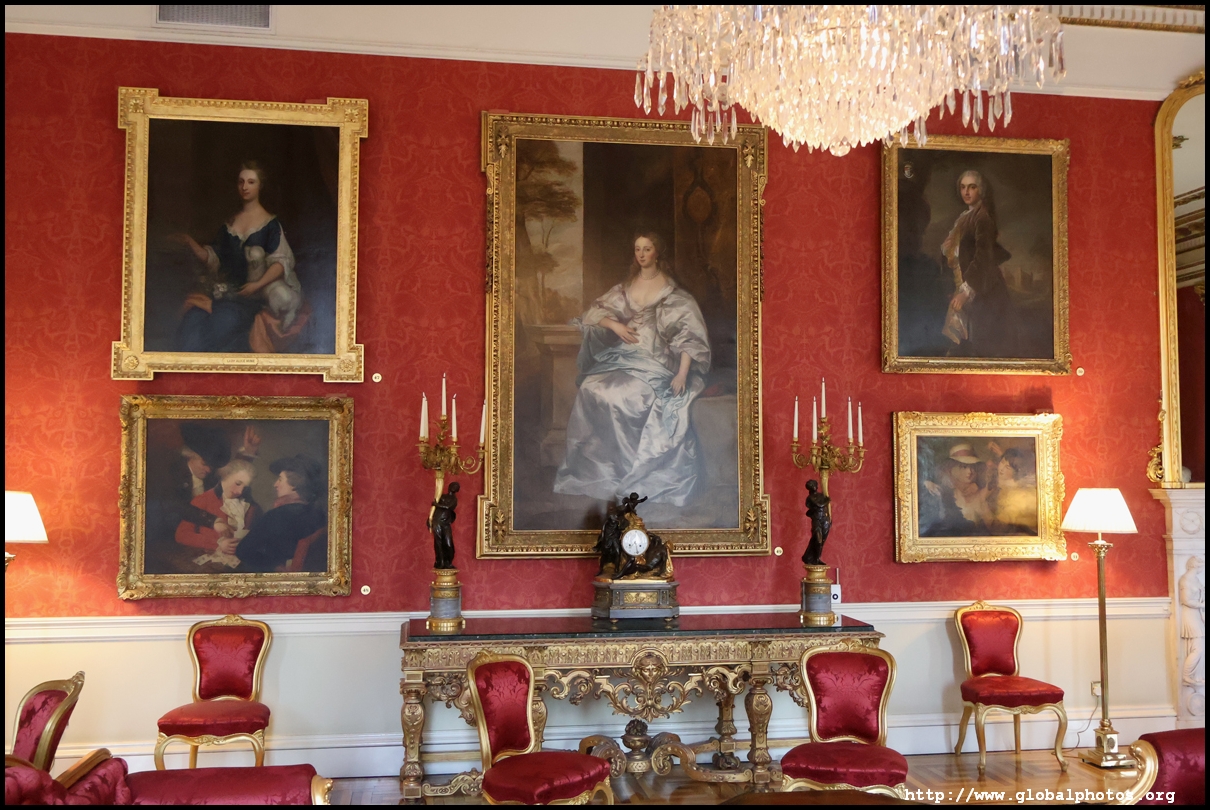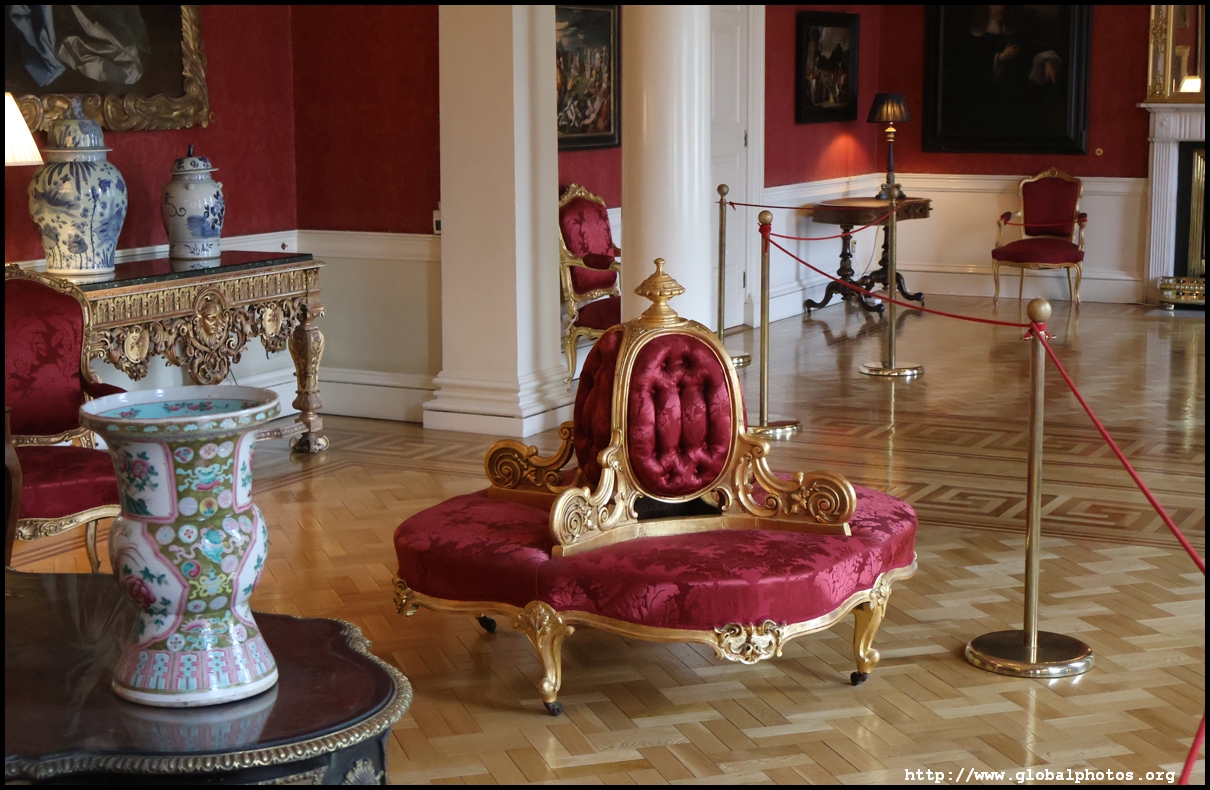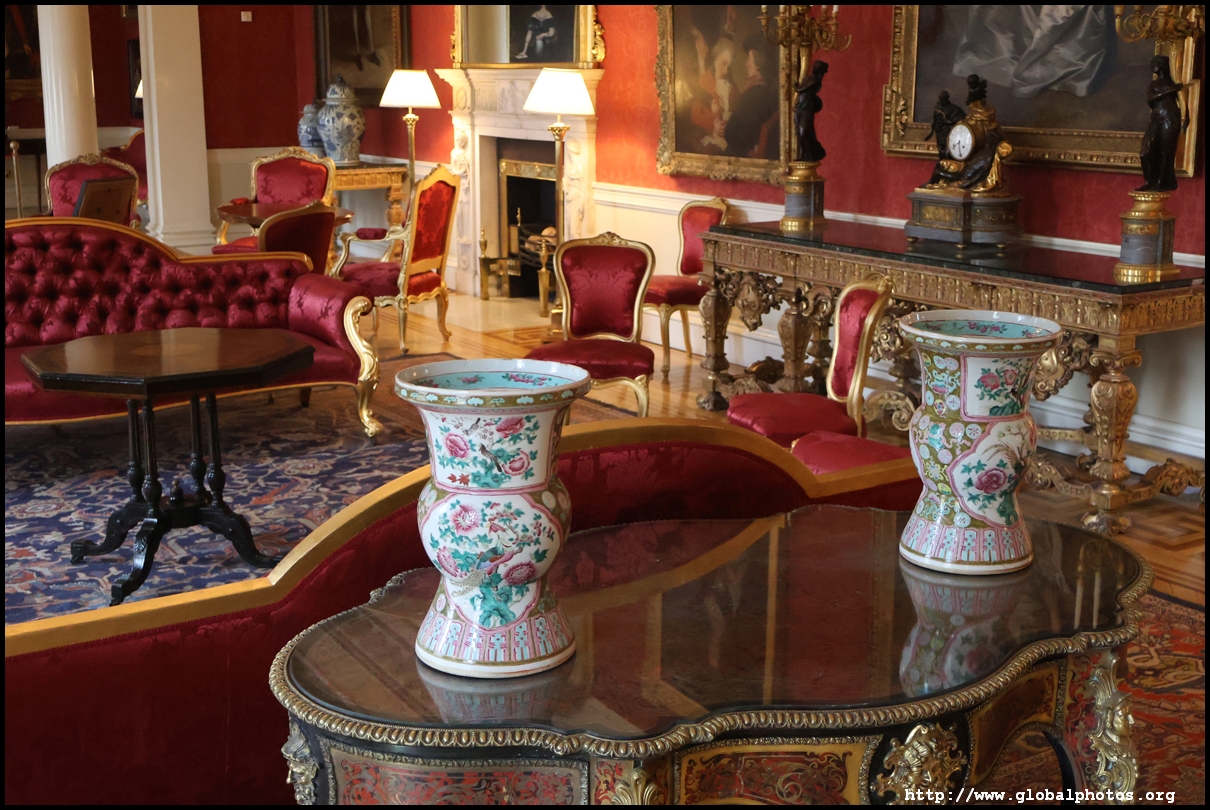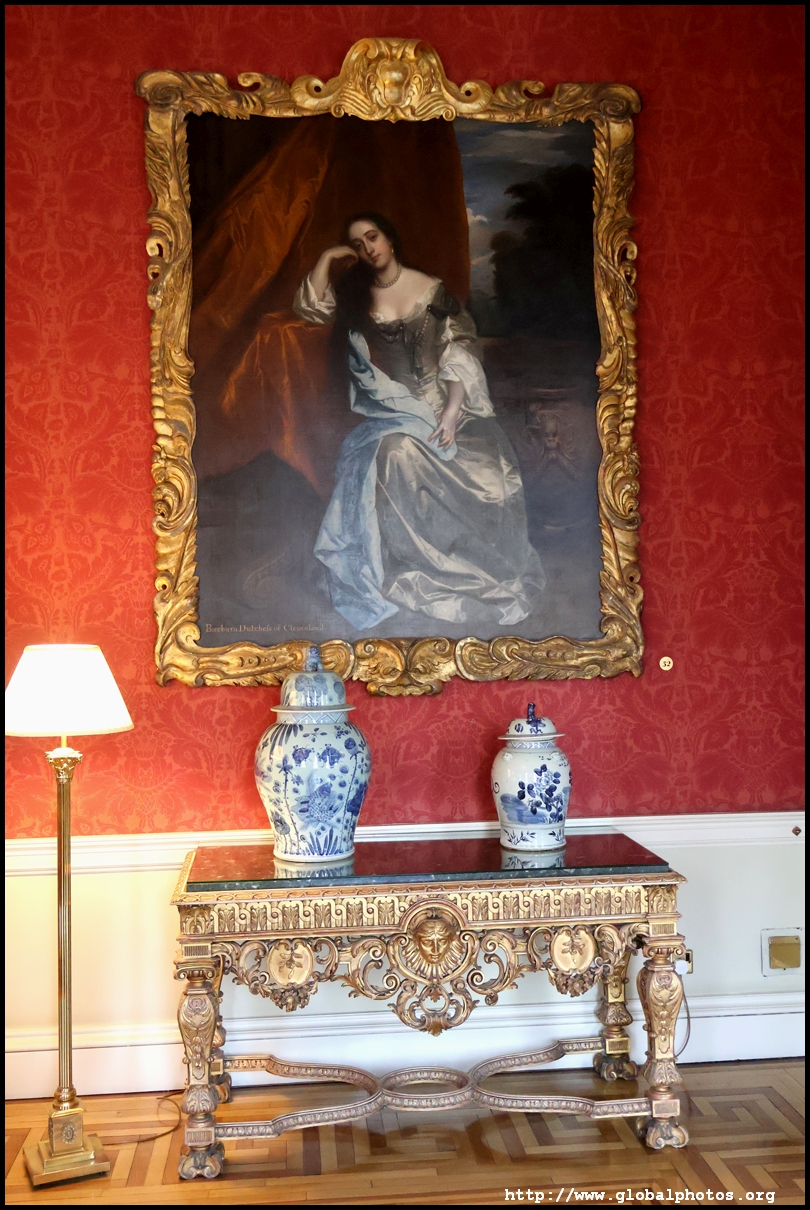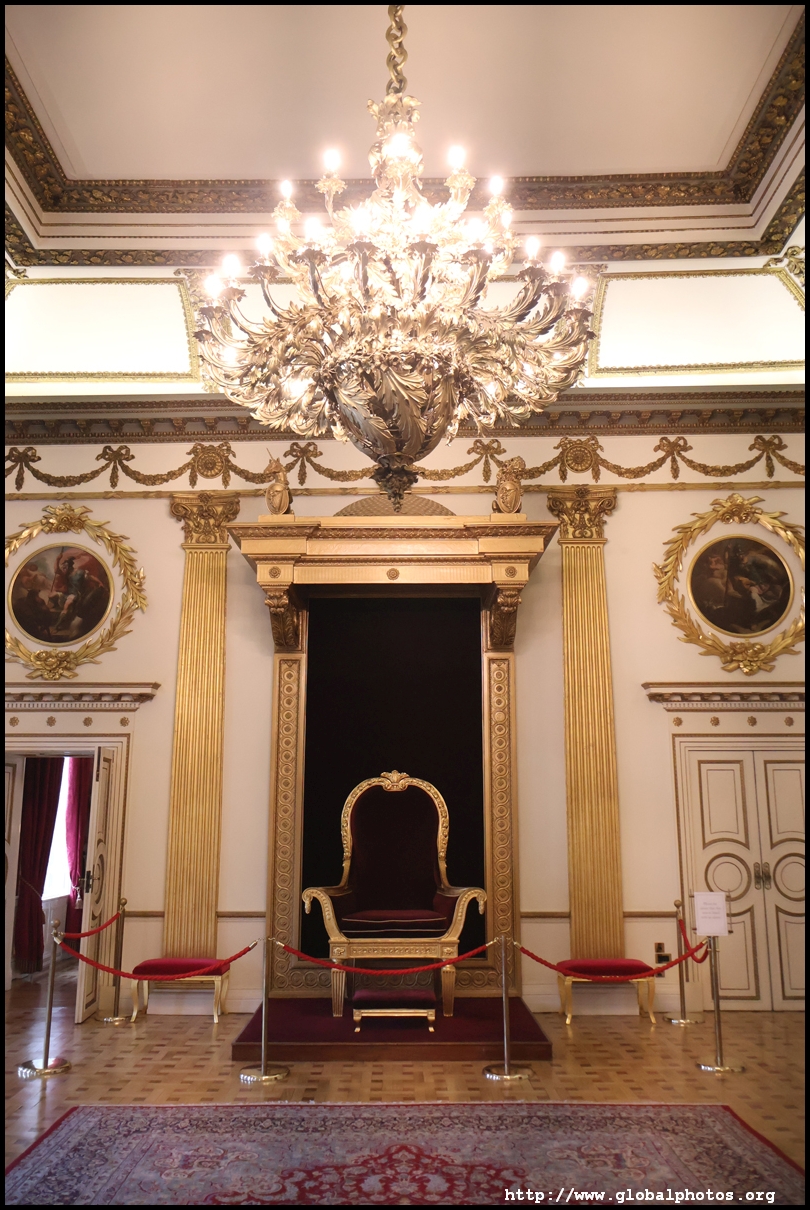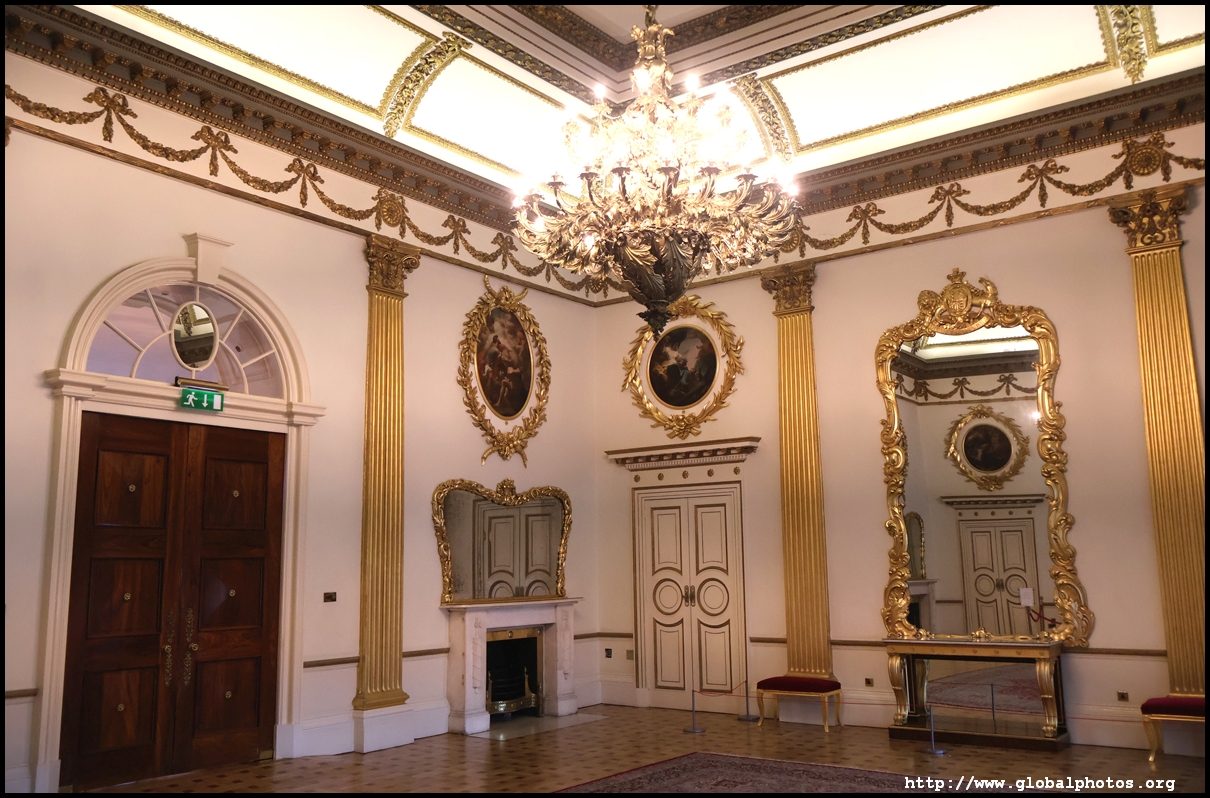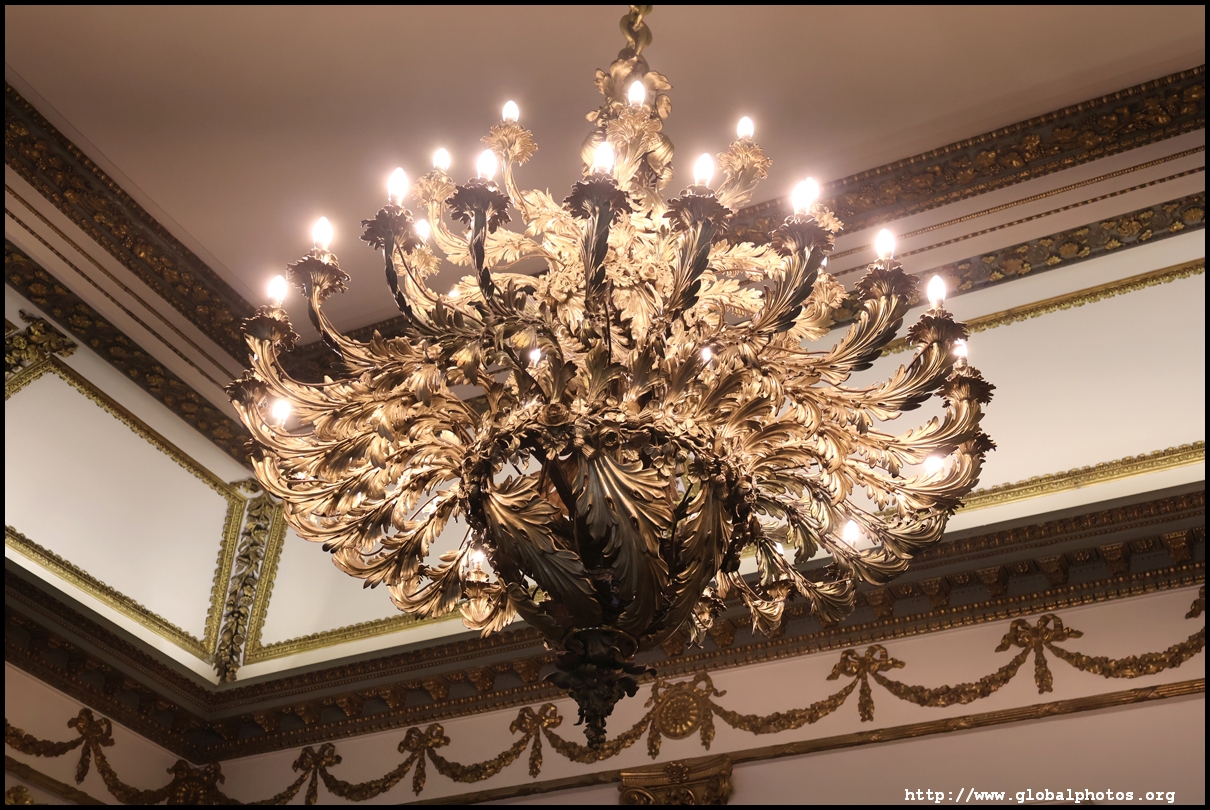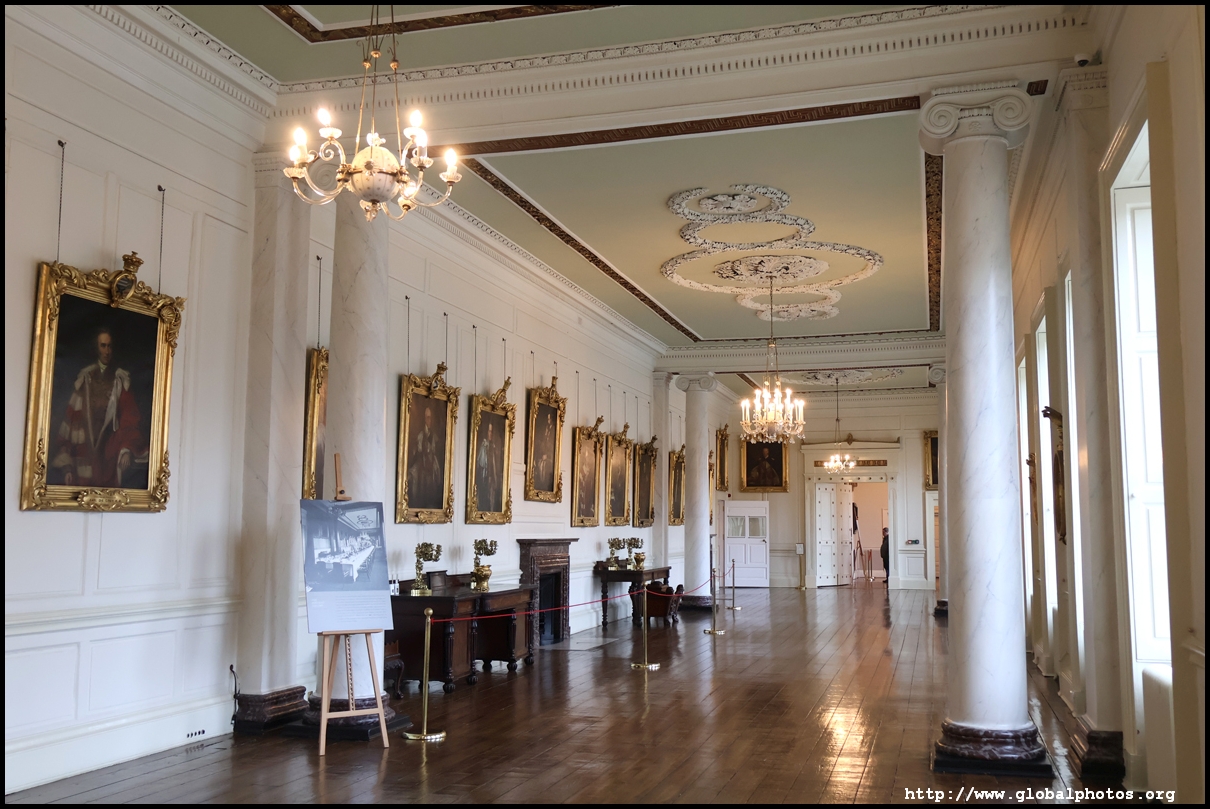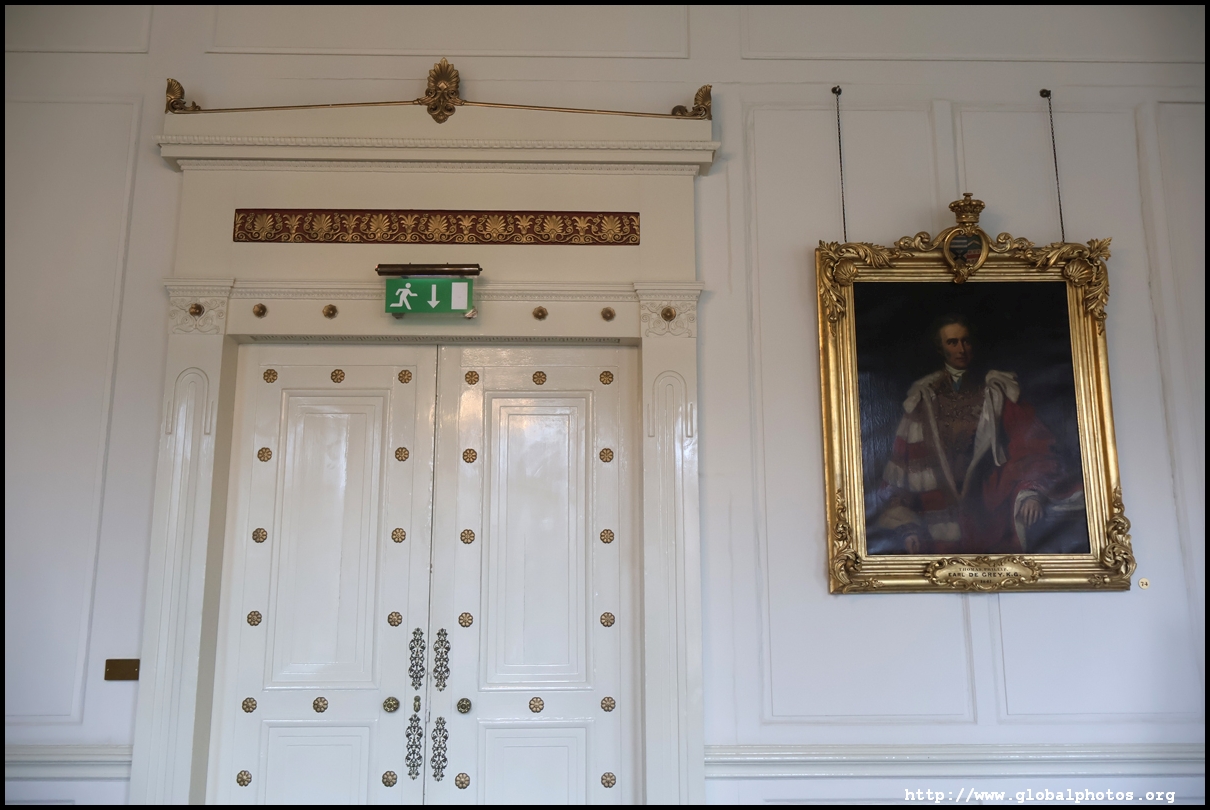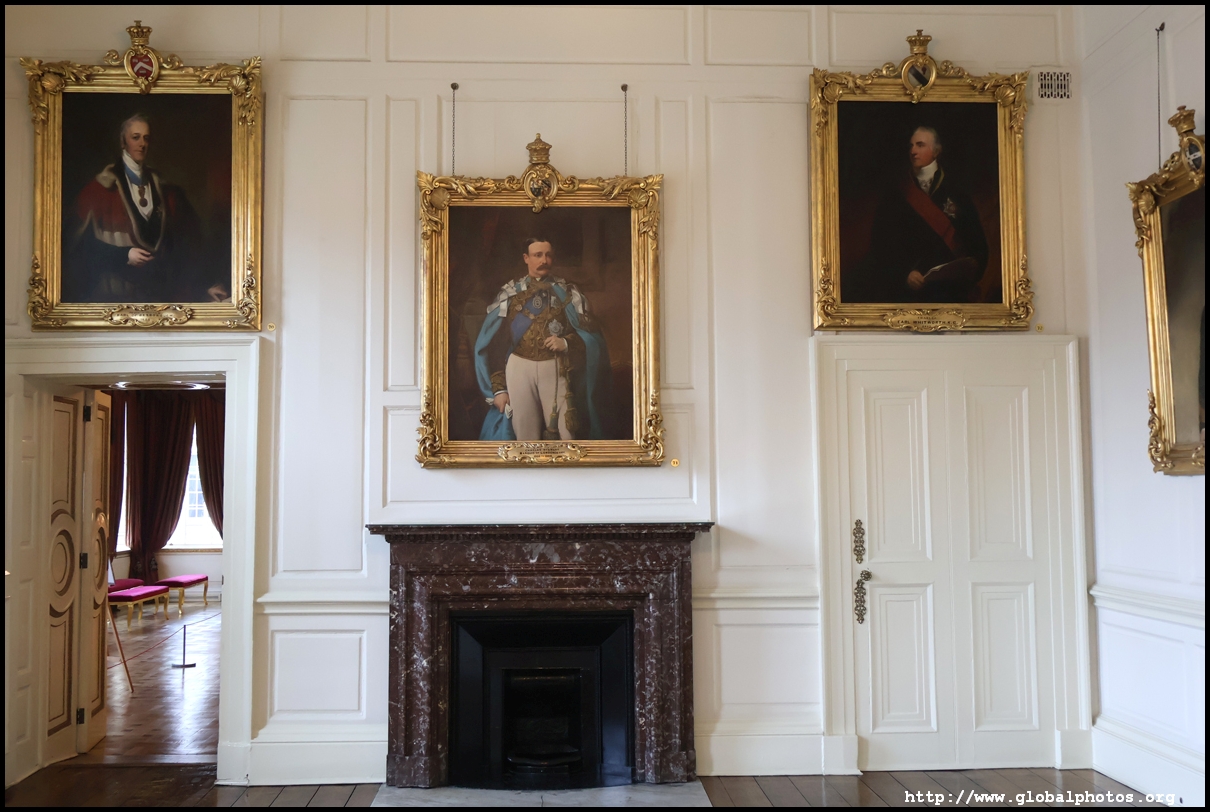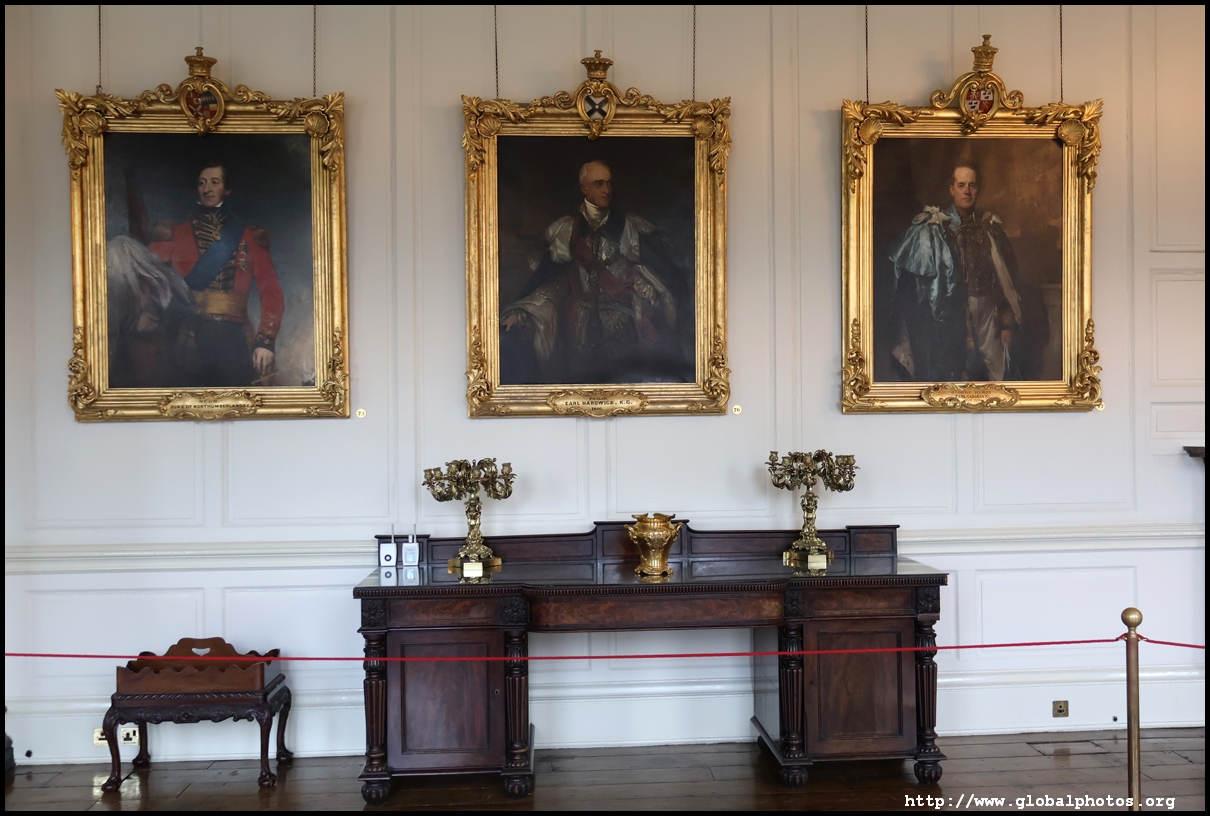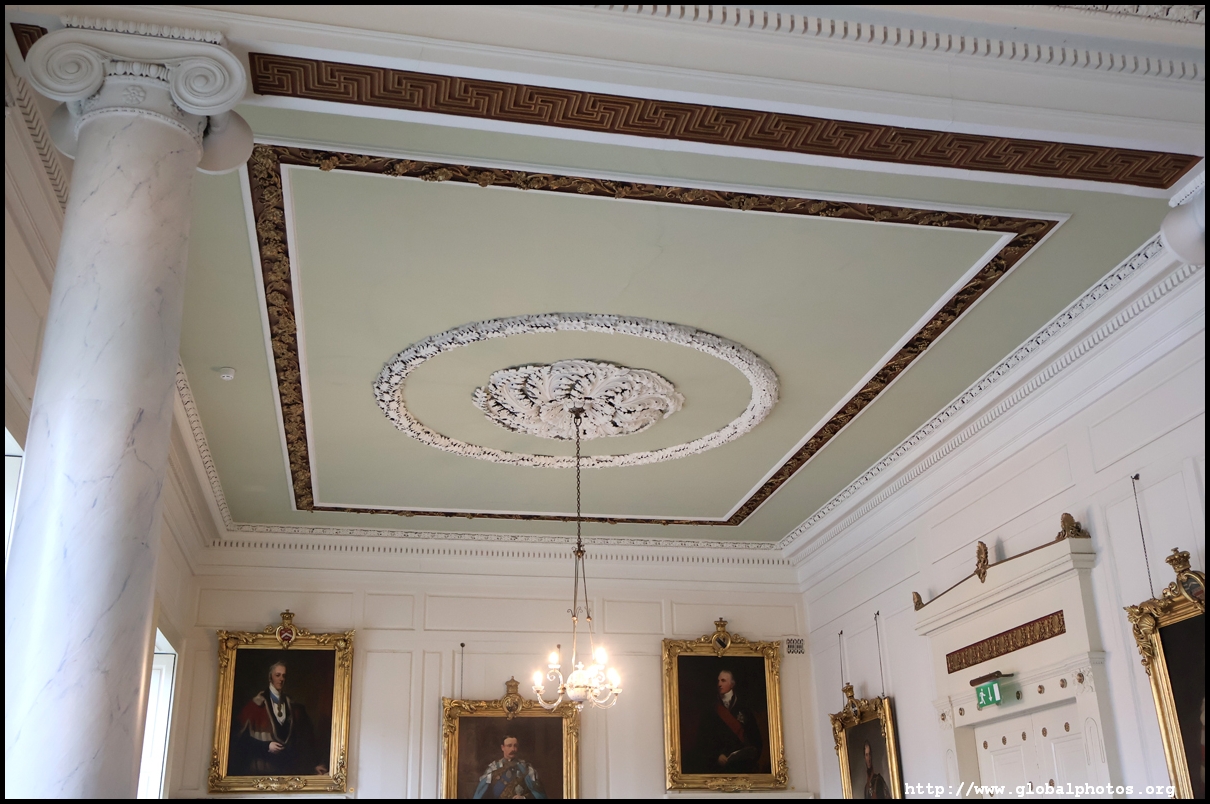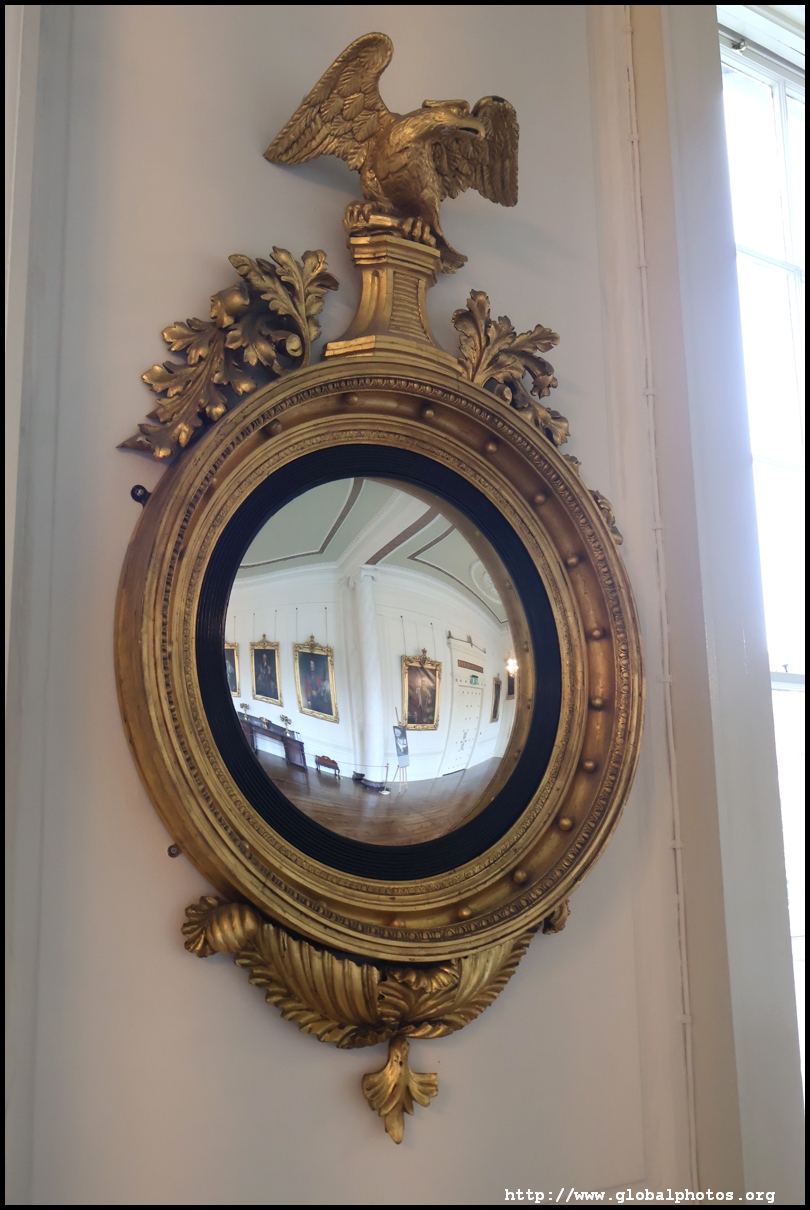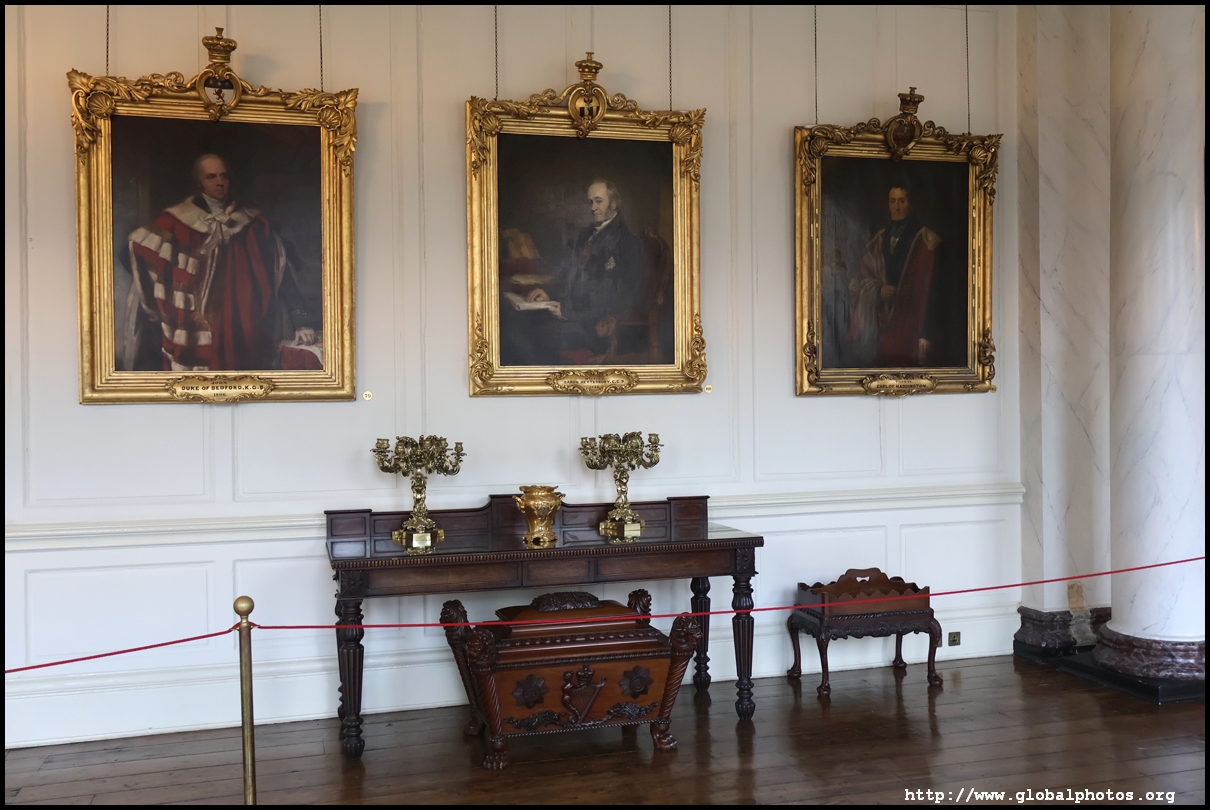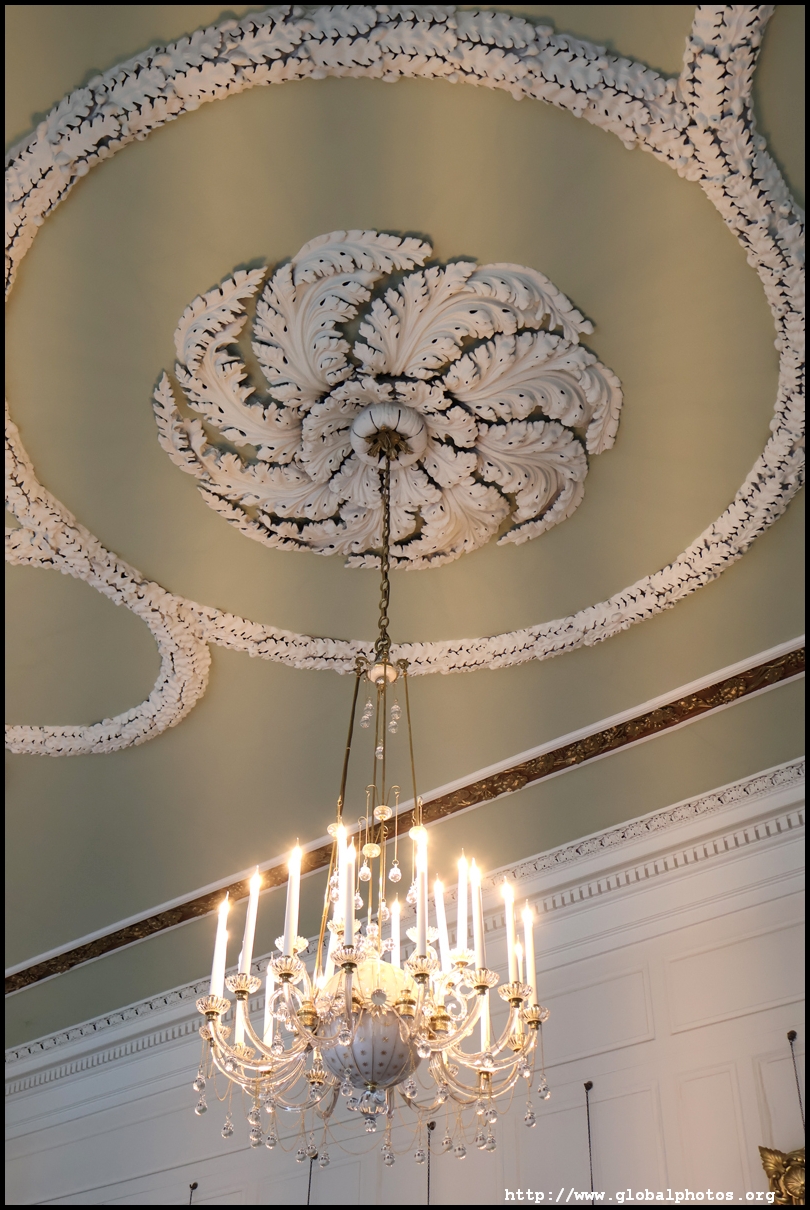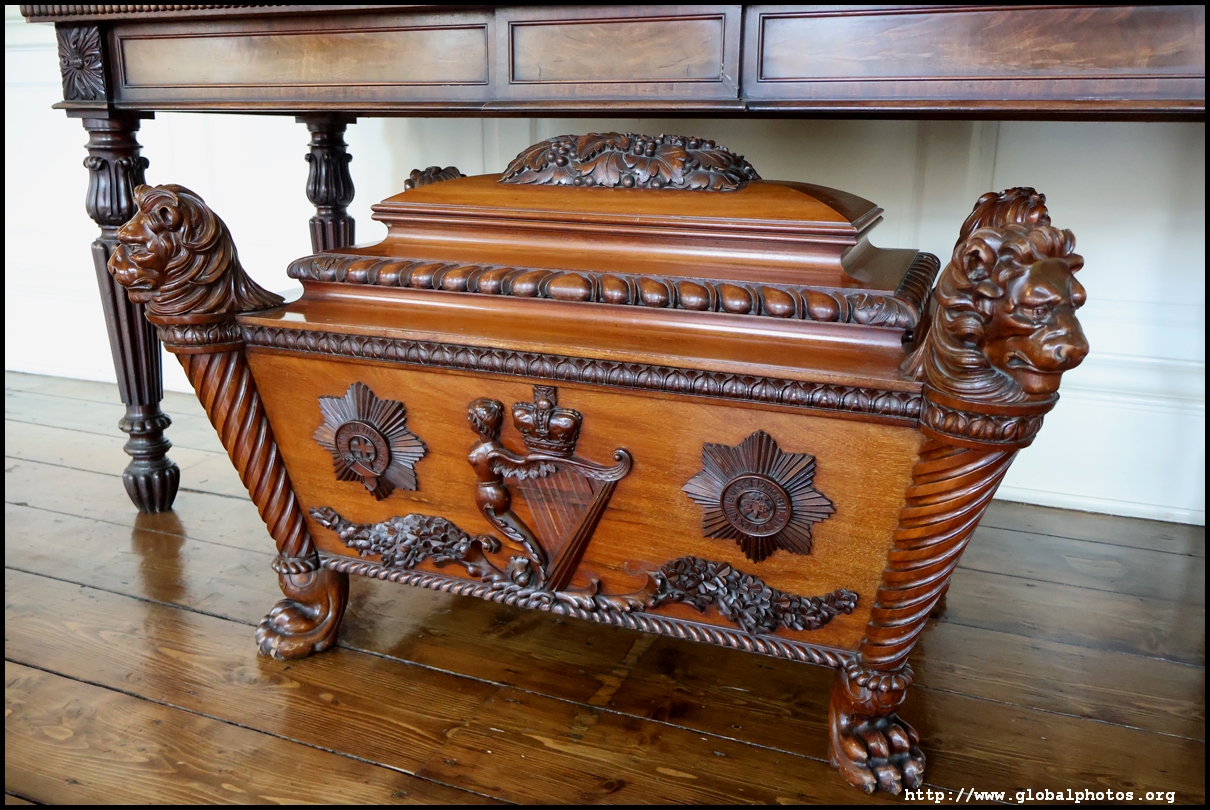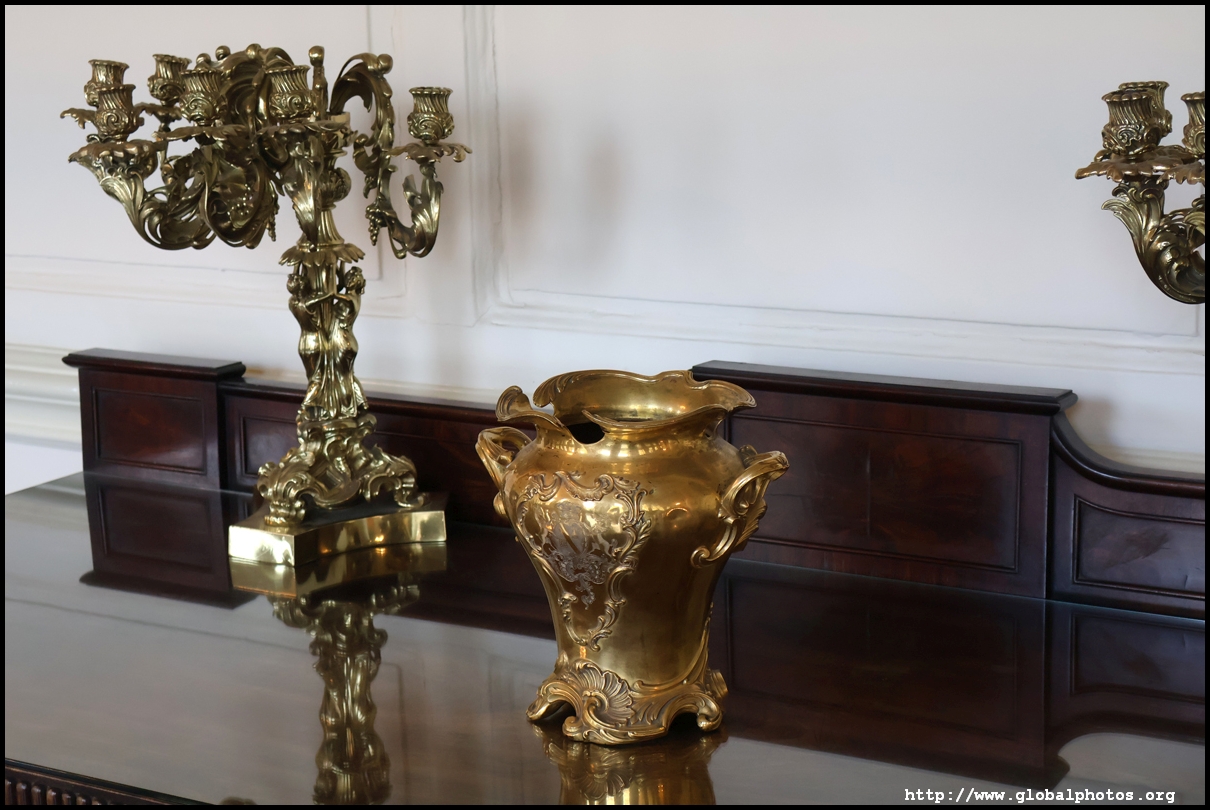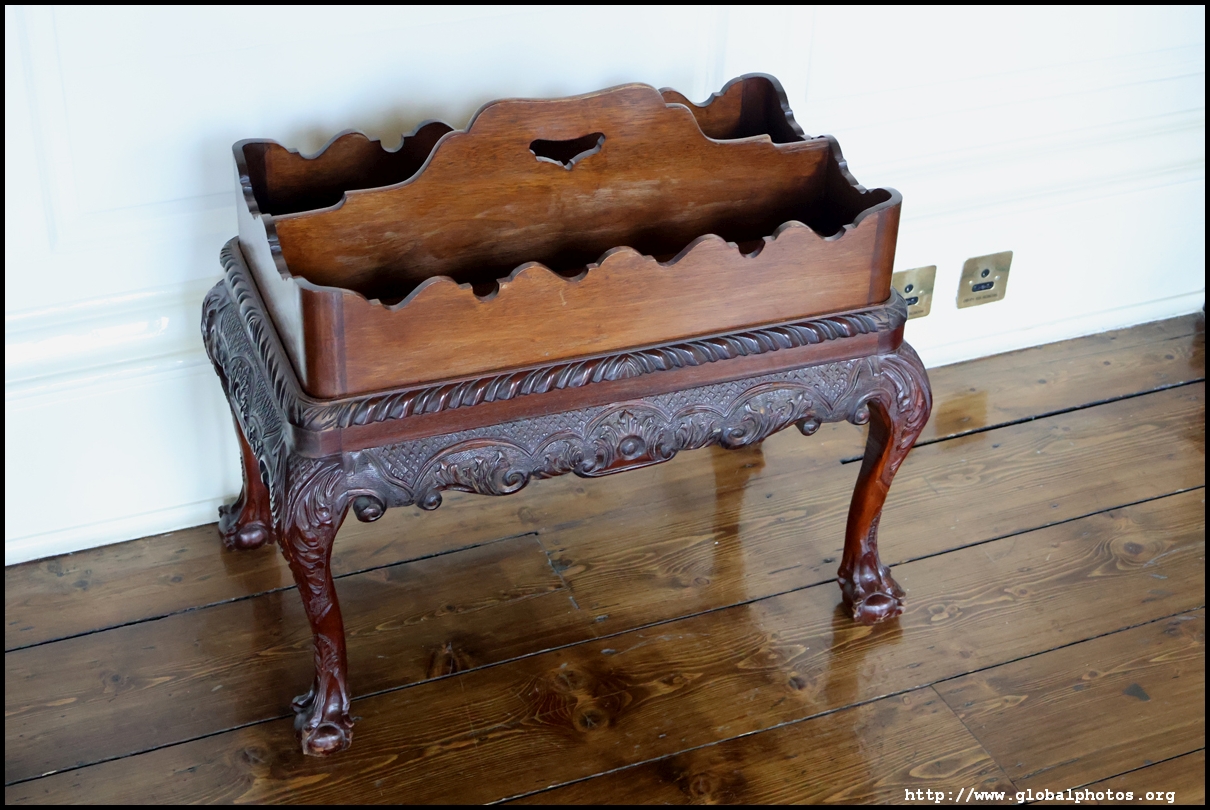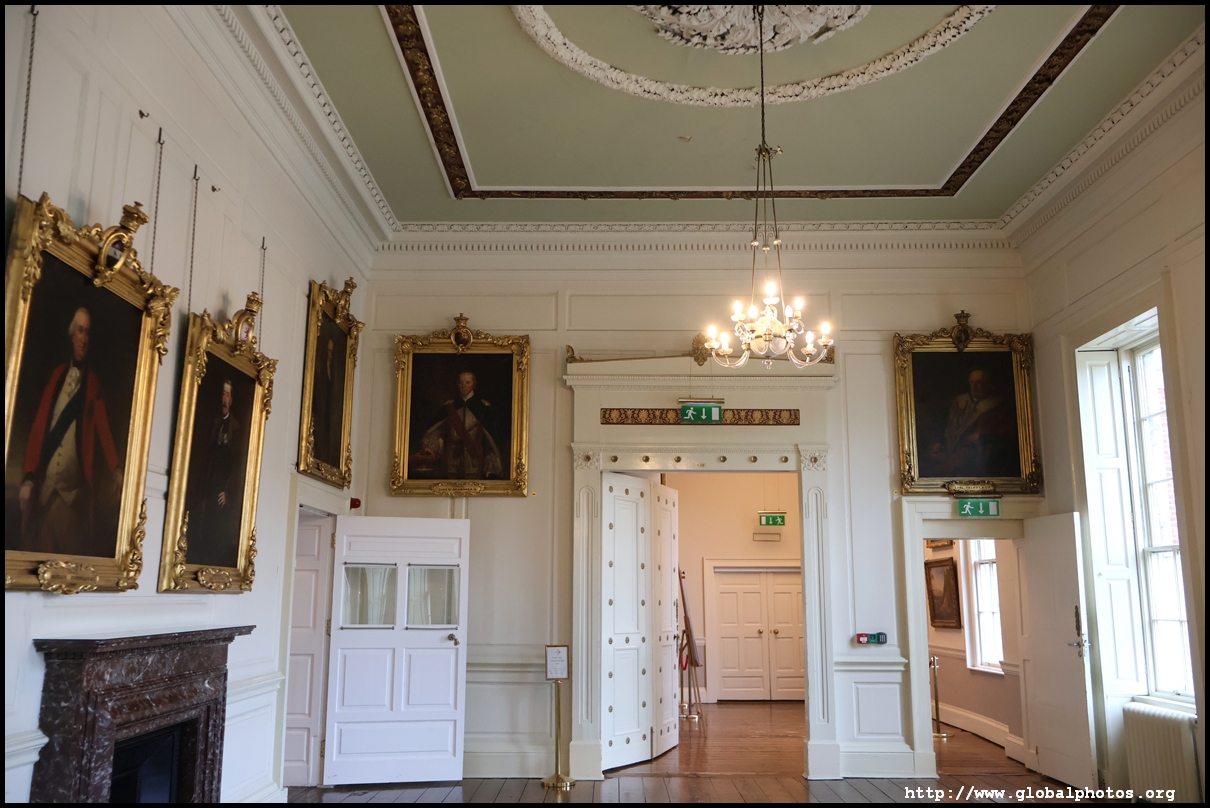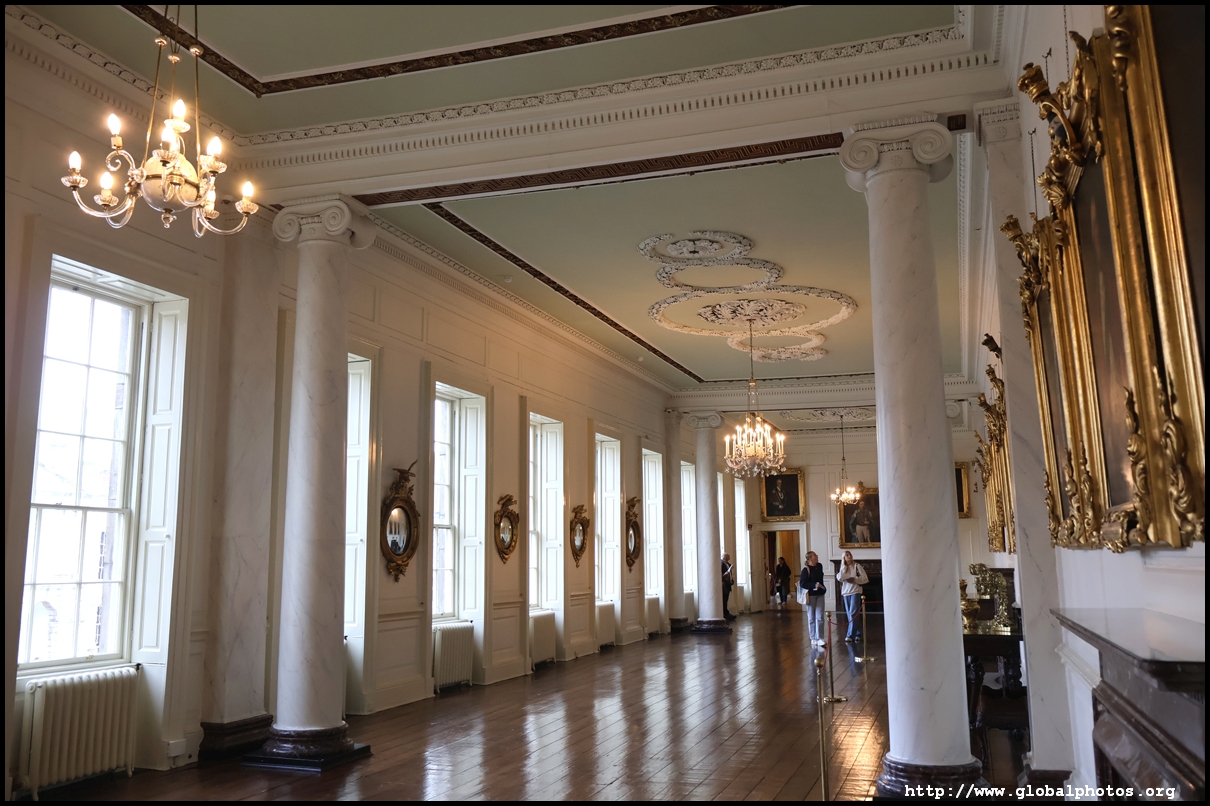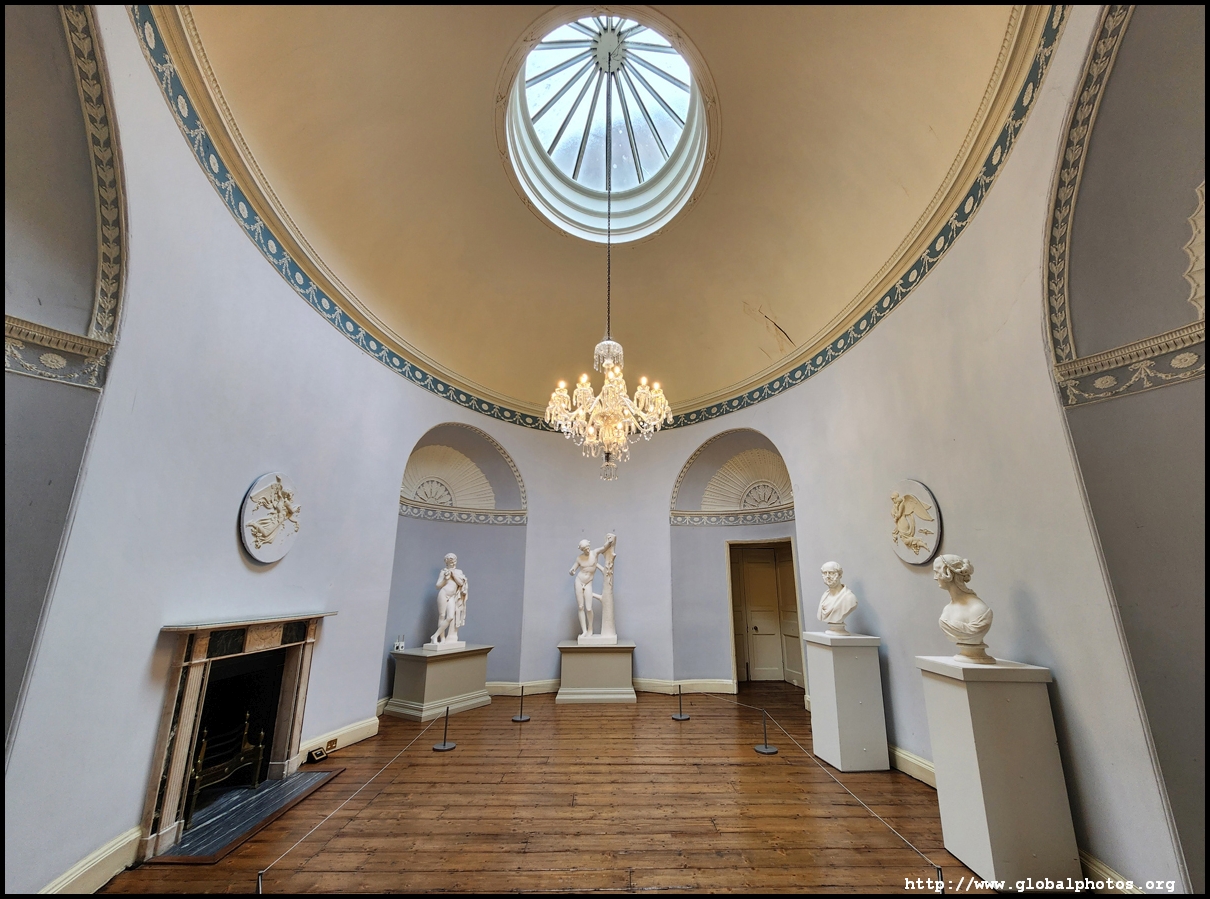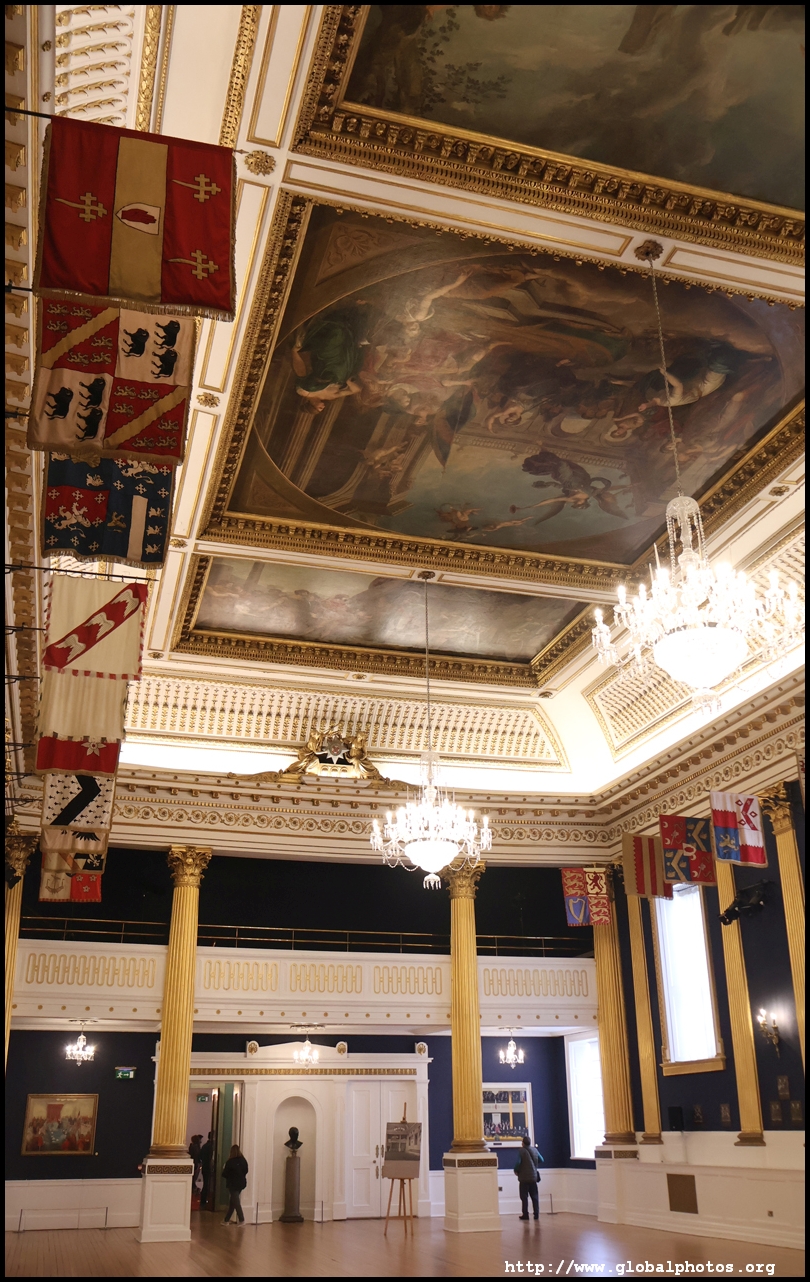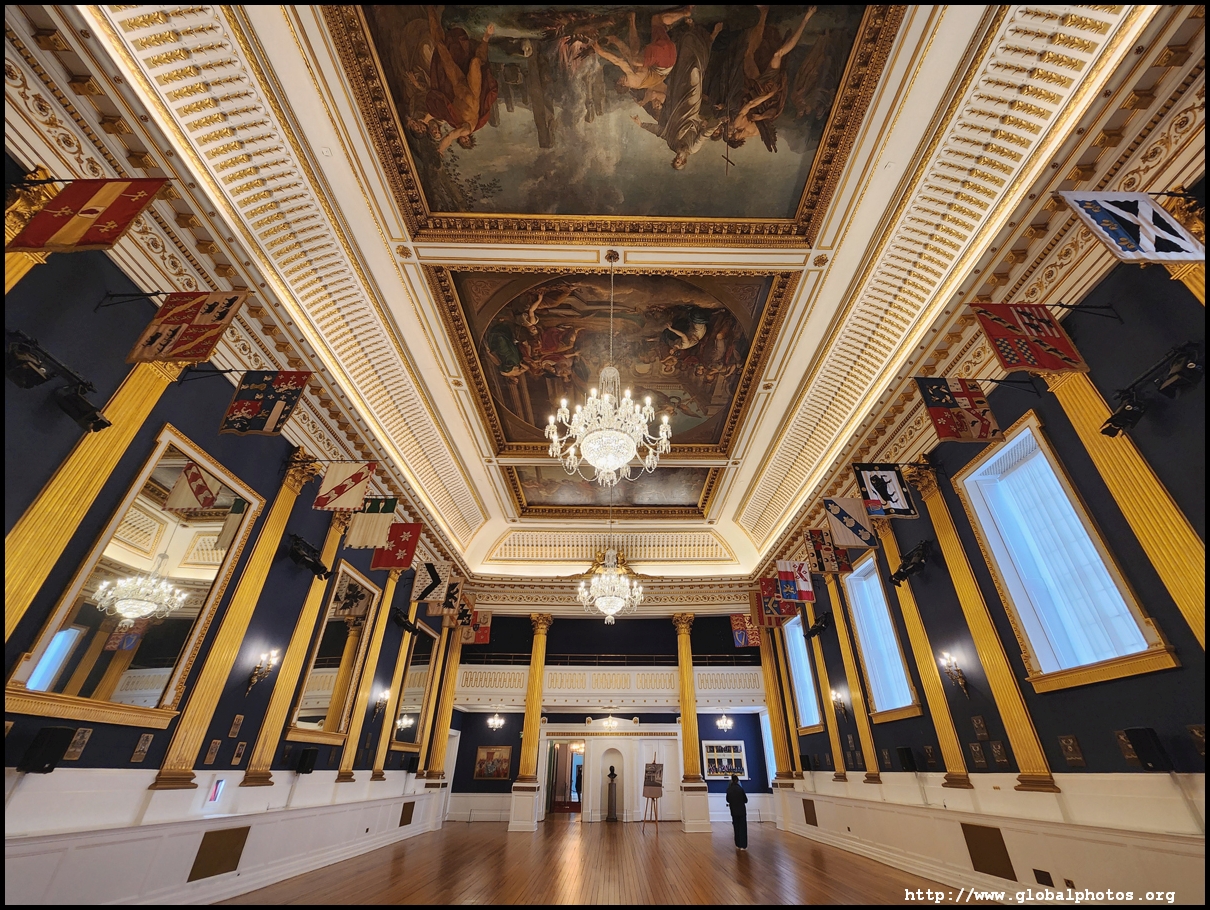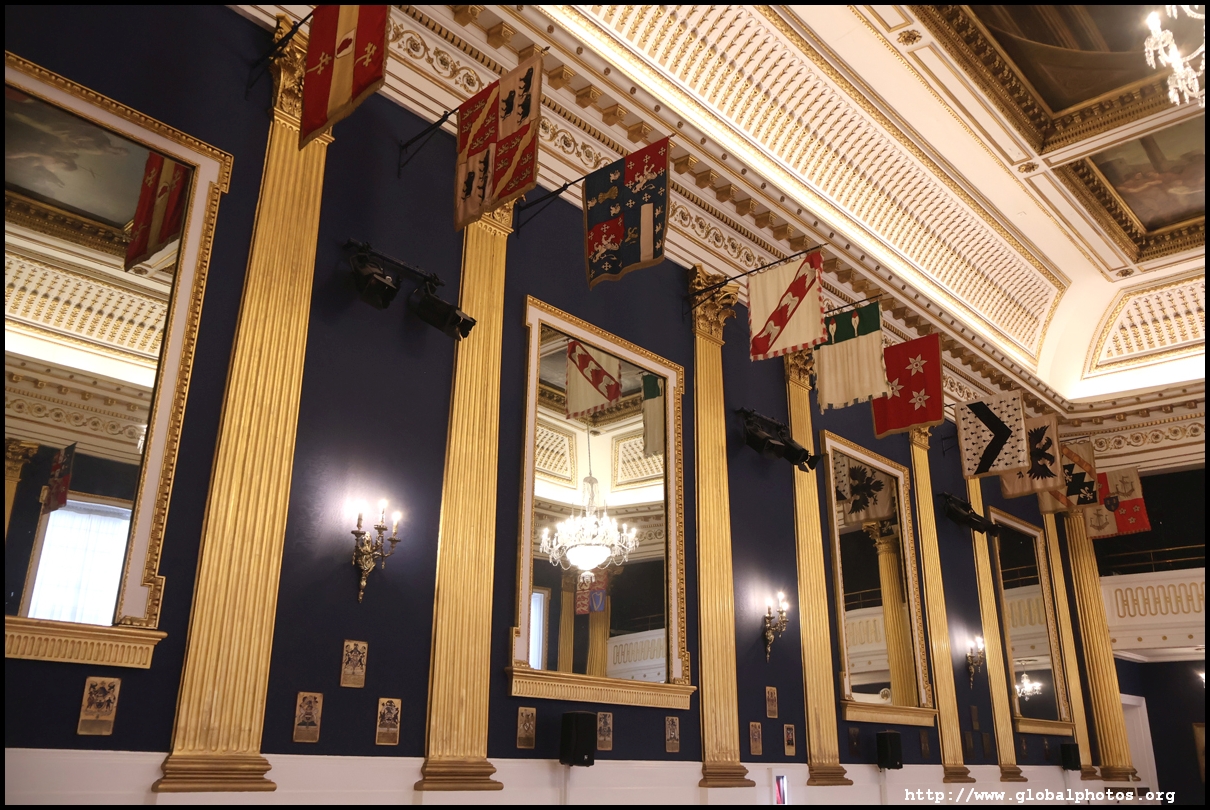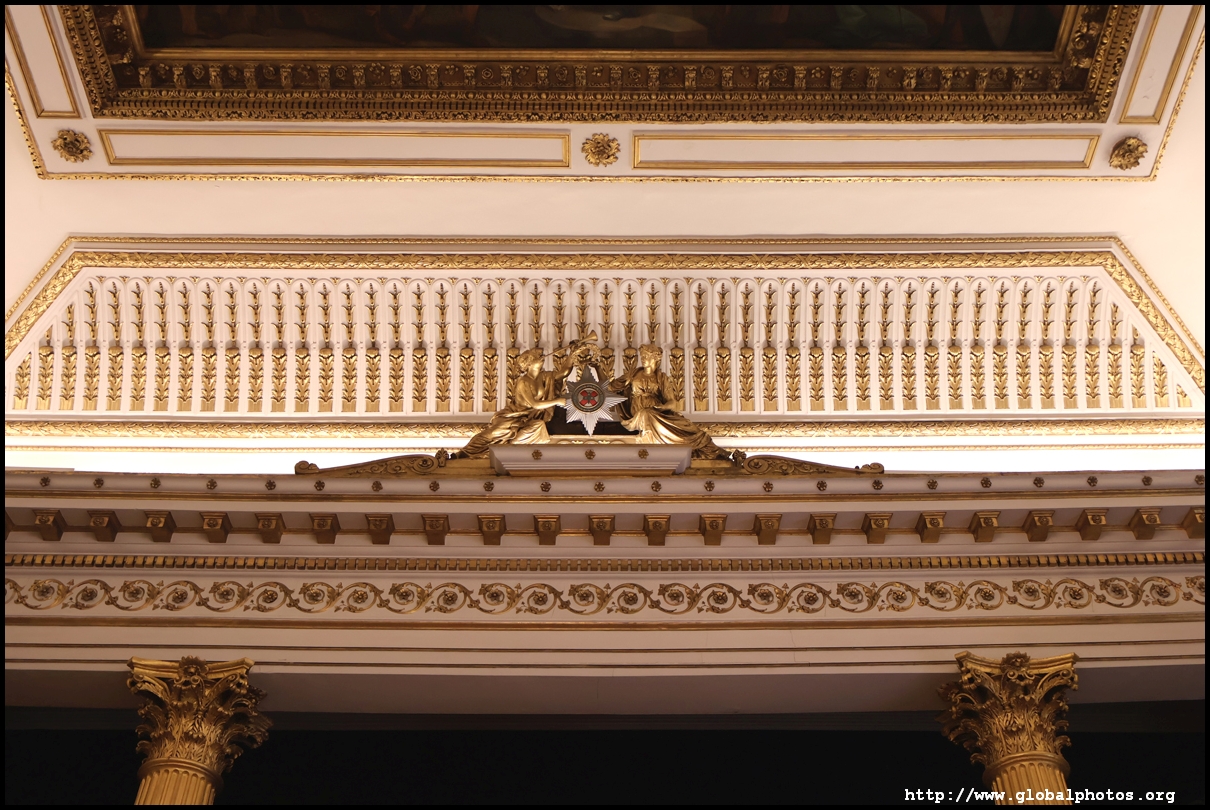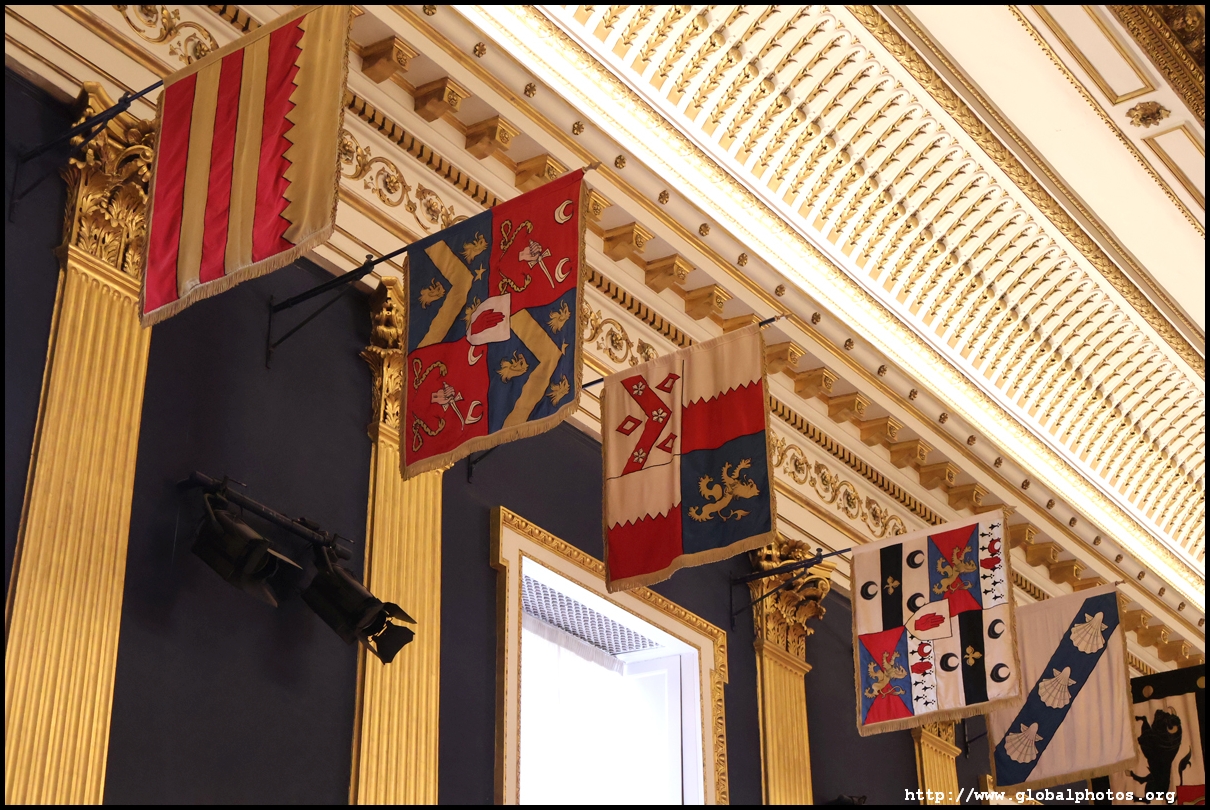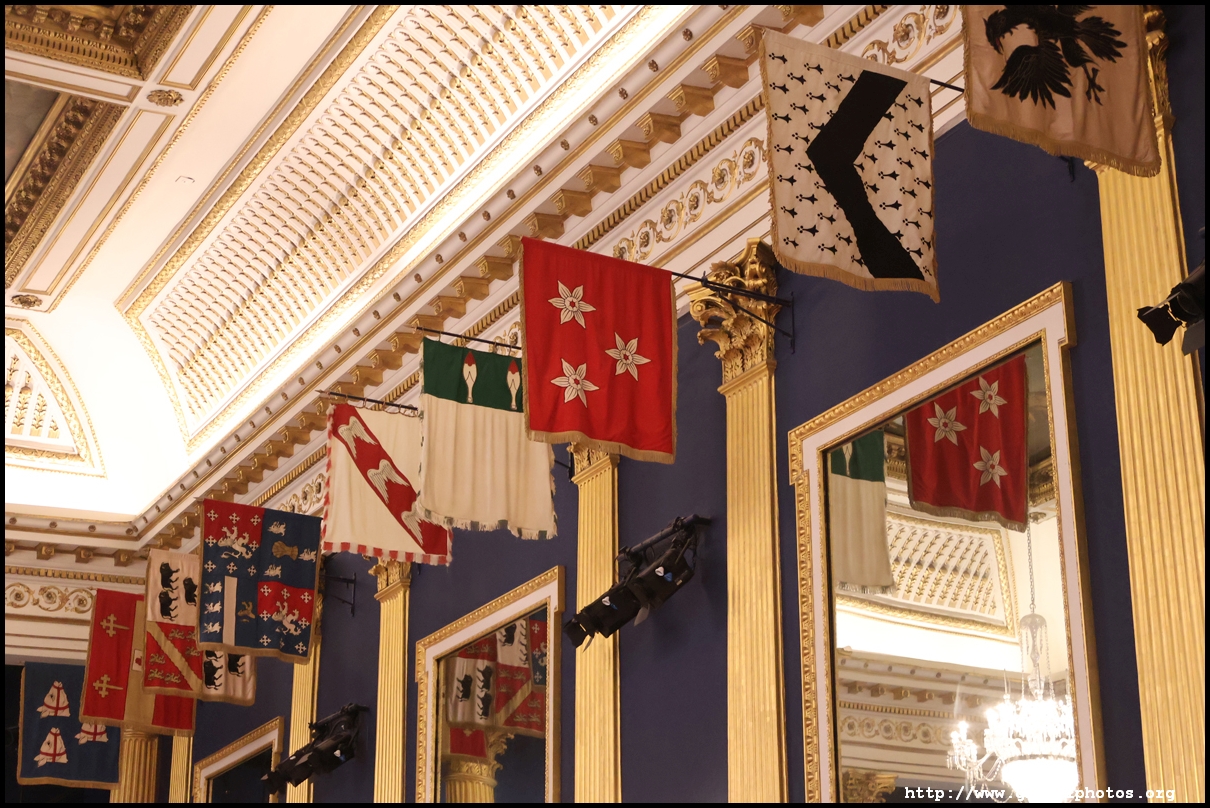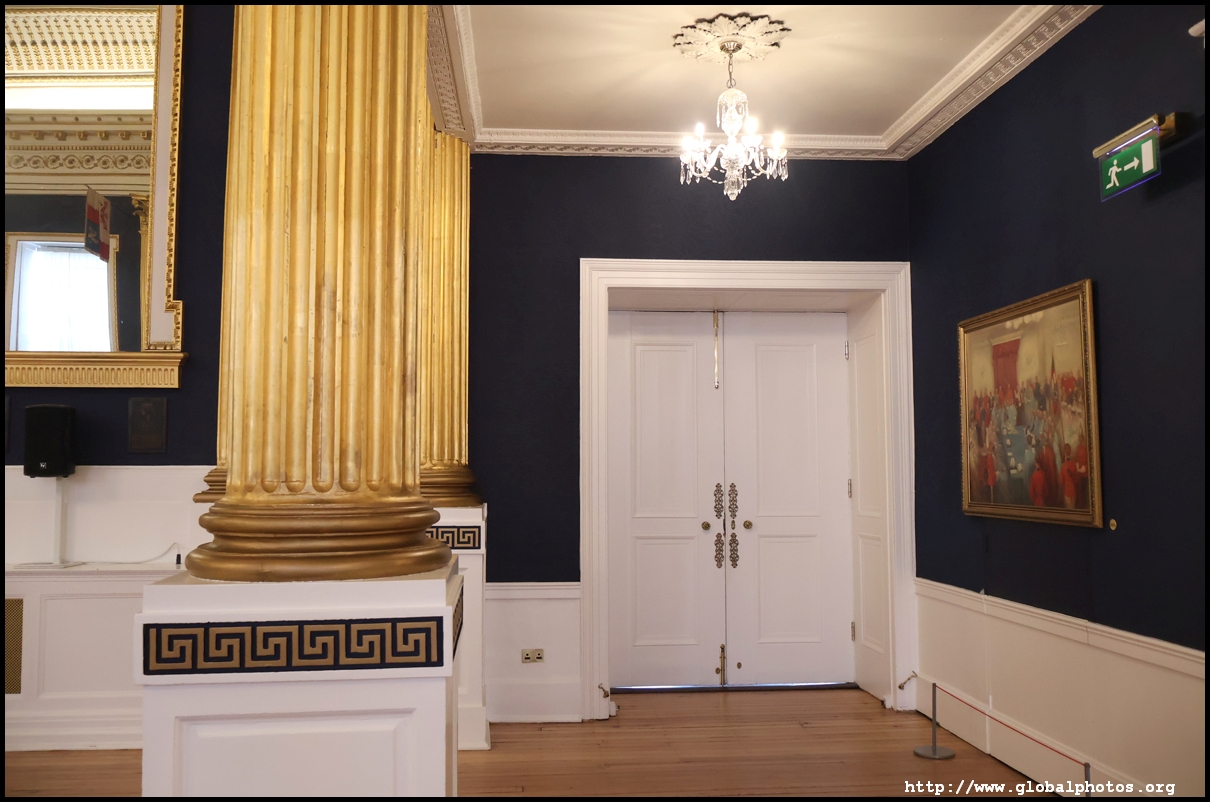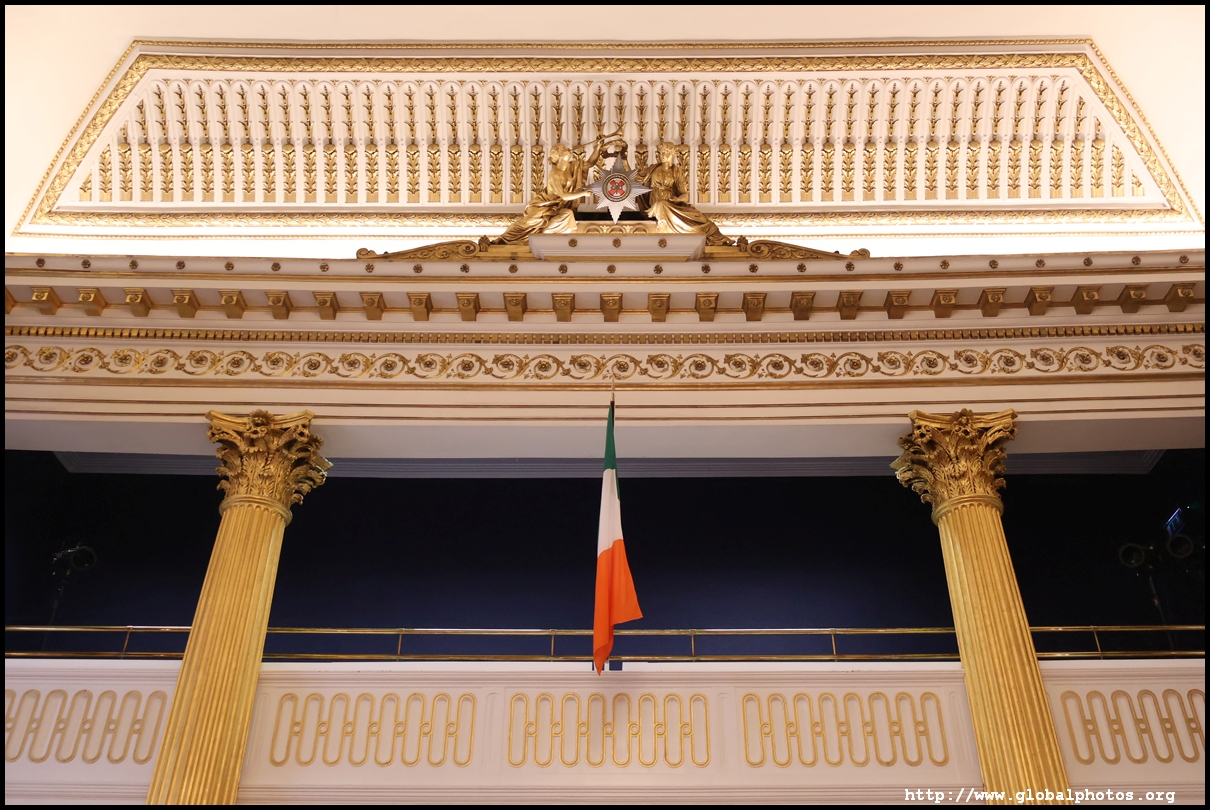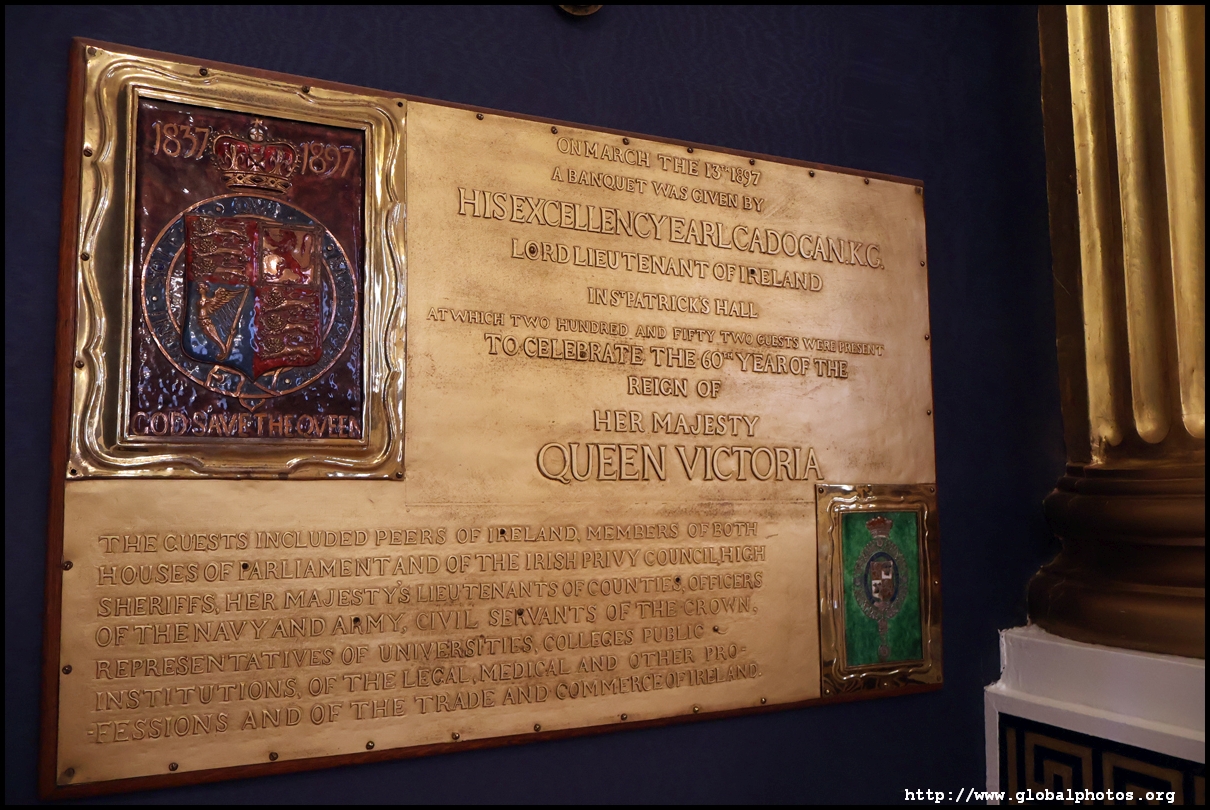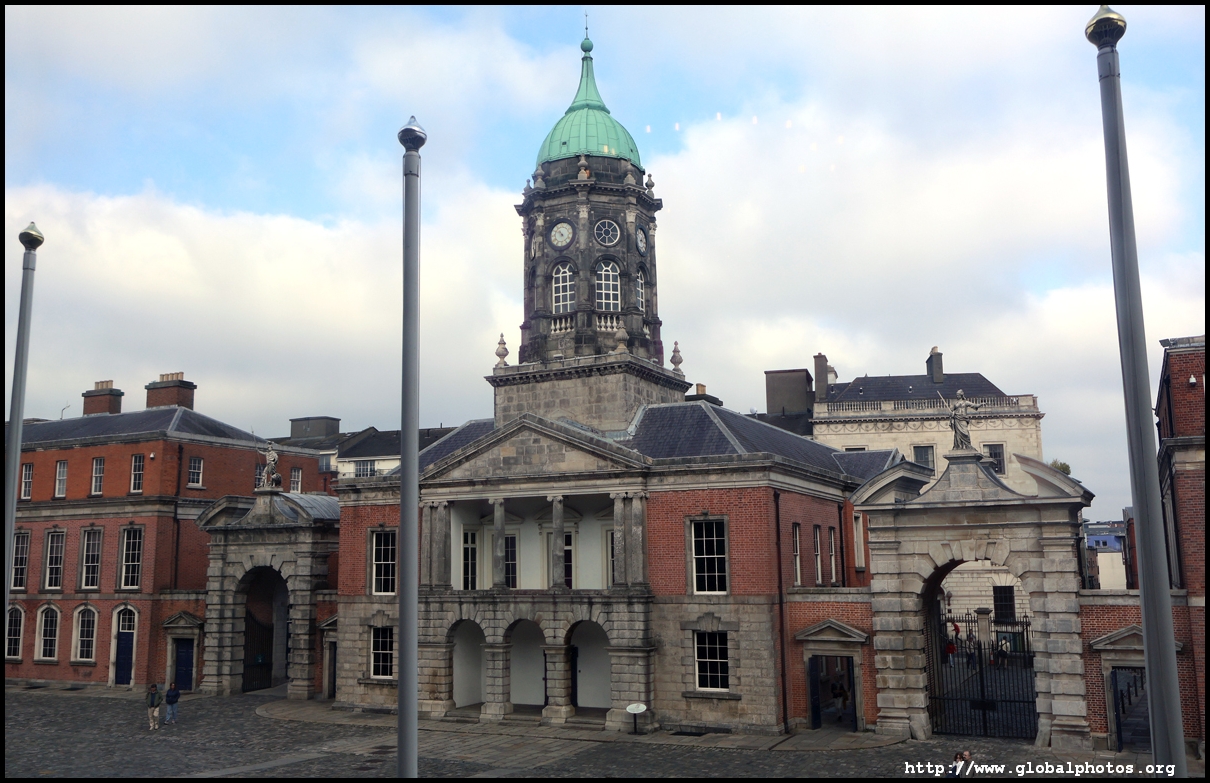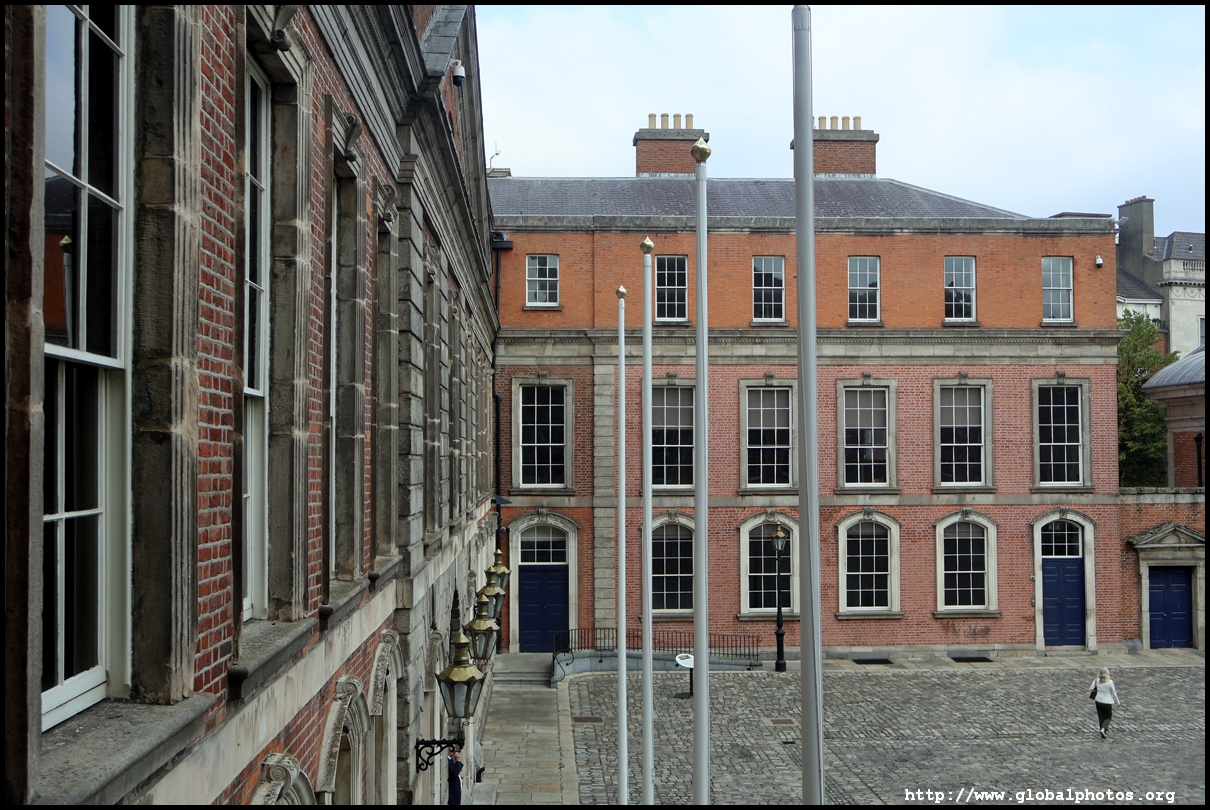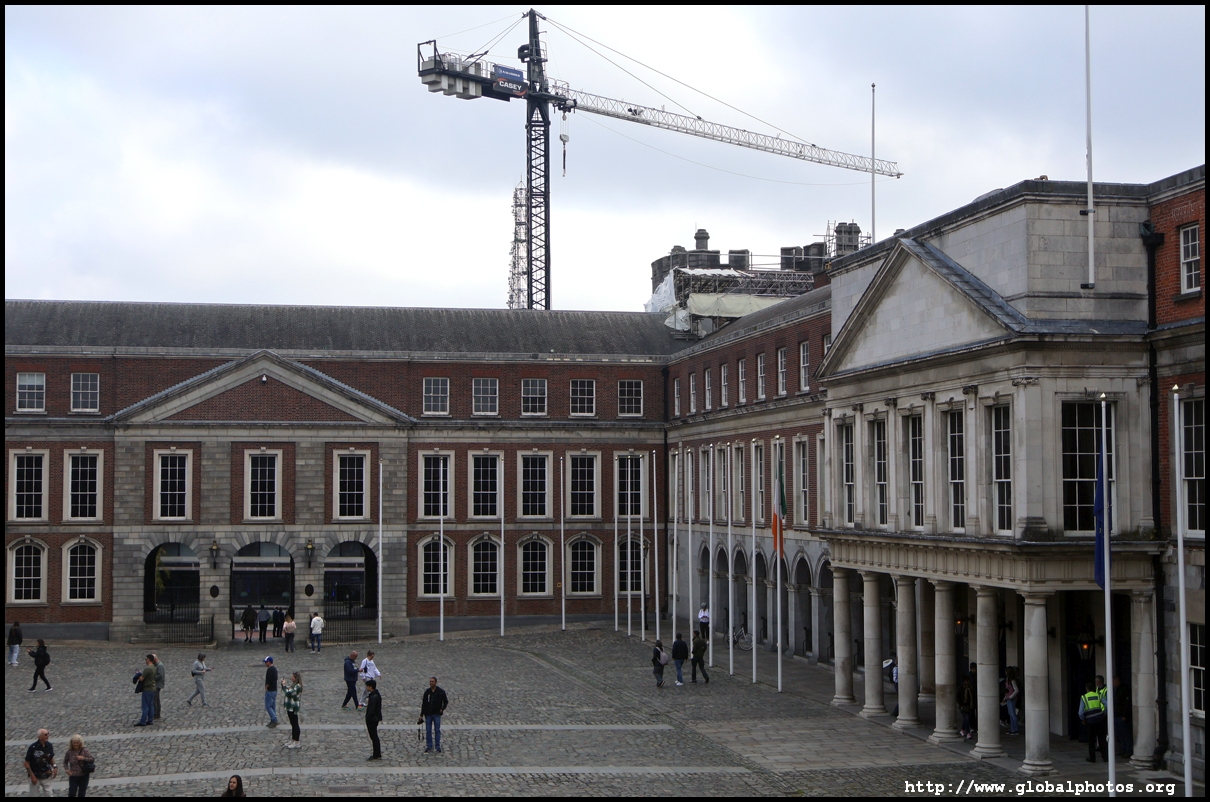Dublin Photo Gallery - Dublin Castle
The castle's history dates back to the early 13th century when a structure was built on top of a Viking settlement. It was a residence for the Viceroy, the English monarch's representative in Ireland. Destroyed by fire in 1684, it was rebuilt as a Georgian palace in the mid-18th century.Today, the building is used for state ceremonies, including hosting foreign dignitaries and the presidential inauguration. Self-guided tours cost 8 euros and require pre-booking online with a set time slot. While I saw people walk in to buy tickets, advance bookings are quite straight forward and I picked the first slot available at 10am to avoid the crowds. There is a web audio guide you can access on your phone to guide you room by room. The grand staircase was built in 1749 with a cantilevered structure, giving an impression that it's floating. The future president would walk through this route en route to his/her inauguration. At the top of the stairs is the harp, an Irish symbol.
The James Connolly Room is dedicated to one of the leaders of the 1916 Easter Rising, which was a failed rebellion against English rule. James believed Irish independence was only possible by taking up arms, but the prevailing opinion at the time was against violence as World War I was under way and the Irish were promised autonomy after the war. At the time, the castle was a military hospital where James stayed as both a prisoner and patient, although he was eventually tried and executed. A copy of the Irish Proclamation of Independence hangs in this room, declaring equal rights to both men and women.
The State Corridor divided the public and private rooms. Portraits of the 9 presidents since independence hang on the walls.
The Apollo Room was destroyed by fire in the 1940s and rebuilt in 1966 using decorations from another building that was demolished earlier.
The Drawing Room was typically used by the ladies after dinner. During royal visits, guests were received here and used extensively during the party season from February until St. Patrick's Day. Young ladies were presented to the Viceroy here and further introduced to future husbands. This room was also destroyed by fire and re-built with a lot of French-style furniture.
The Throne Room dates from 1788 as an audience chamber for the Viceroy to receive guests and where young ladies were presented to enter into society. The throne was installed for King George IV's visit in 1821.
The Portrait Gallery was used as a dining room when the Viceroy was in residence.
The oval-shaped Wedgewood Room is named after the blue and white scheme from Wedgewood pottery and was completed in 1777. It later became the billiard room in 1836 when a 85 pound billiard table was bought.
St. Patrick's Hall is the largest room and was originally used as a ballroom in the mid-18th century and a meeting place for the Knights of St. Patrick. Their flags still line the walls. Today, it is used to inaugurate the president, who has a term of 7 years.
Views from the windows :
| ||
Dublin Photo Gallery Main Page
Official Dublin Castle Audio Guide
Background logo is sourced from the Dublin City Council
To re-use these photos or notify of errors, please email me. Thank you.

